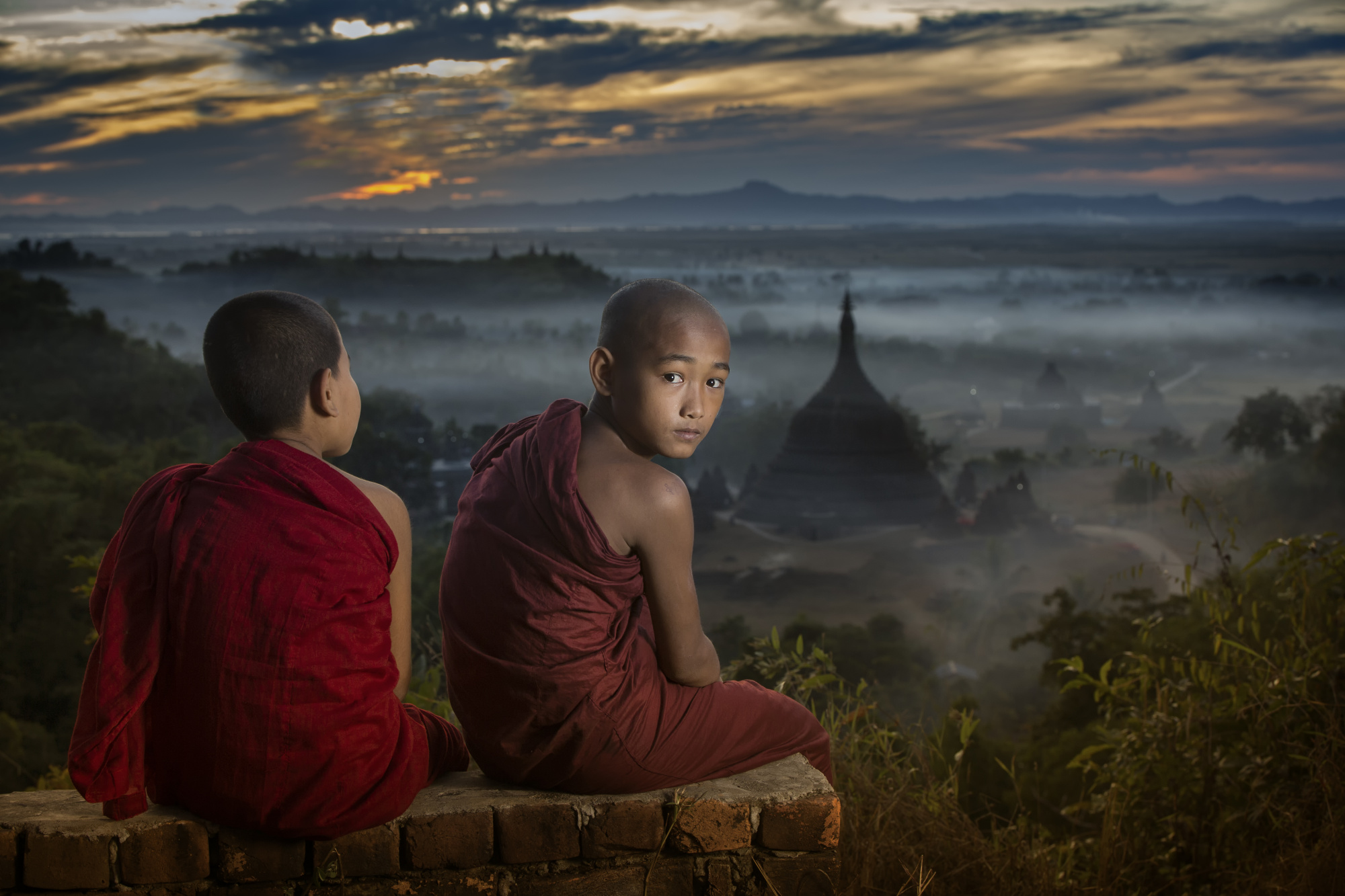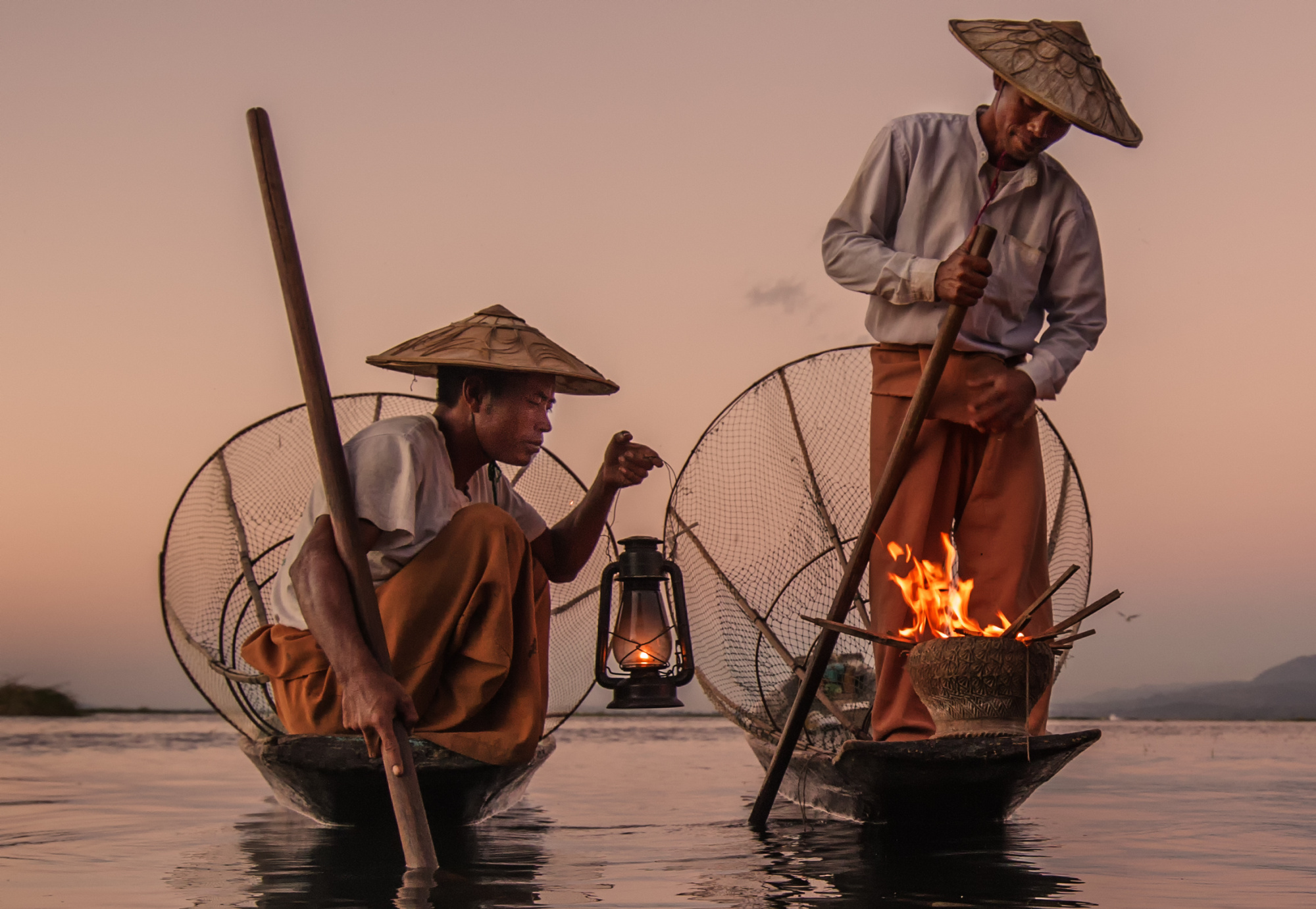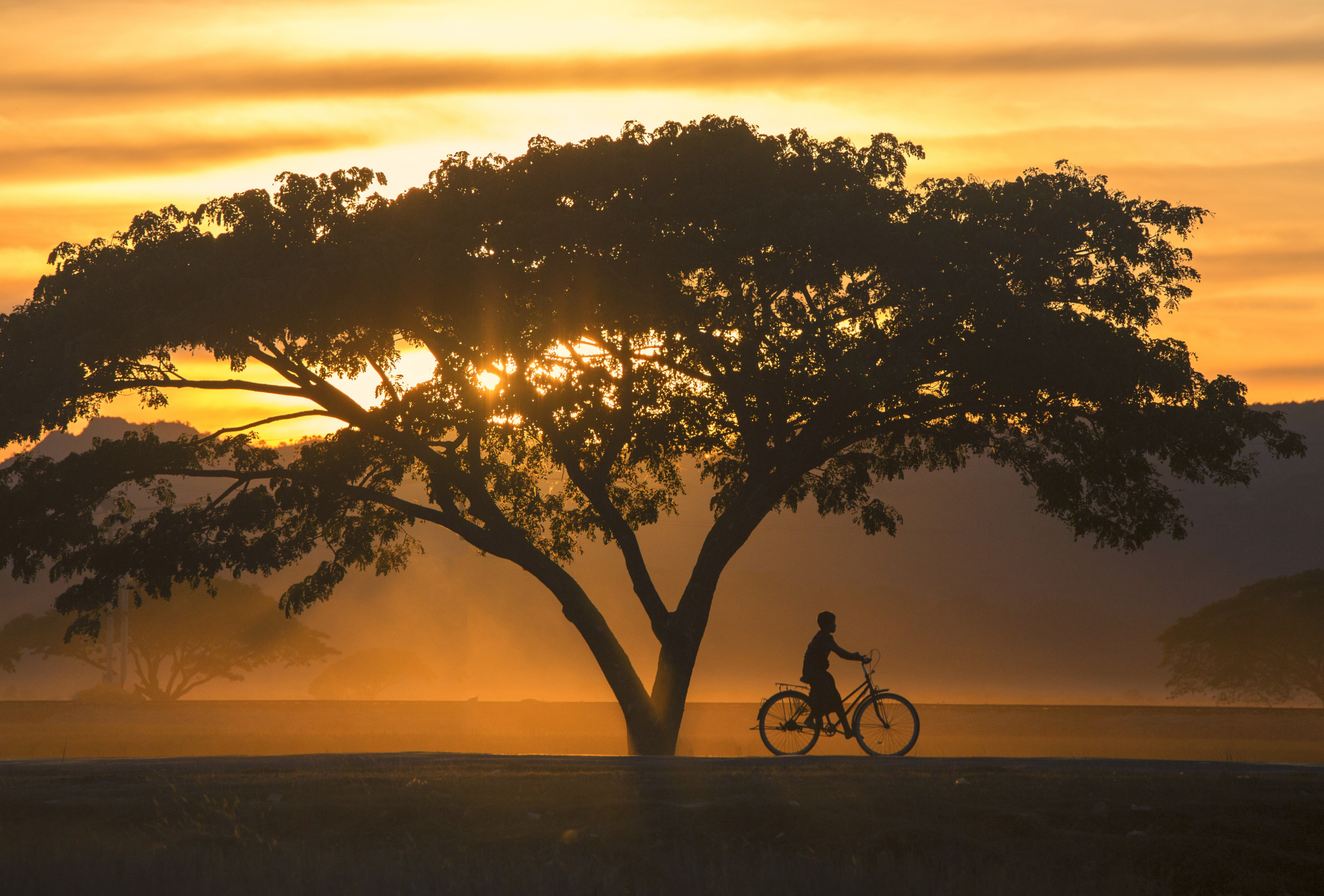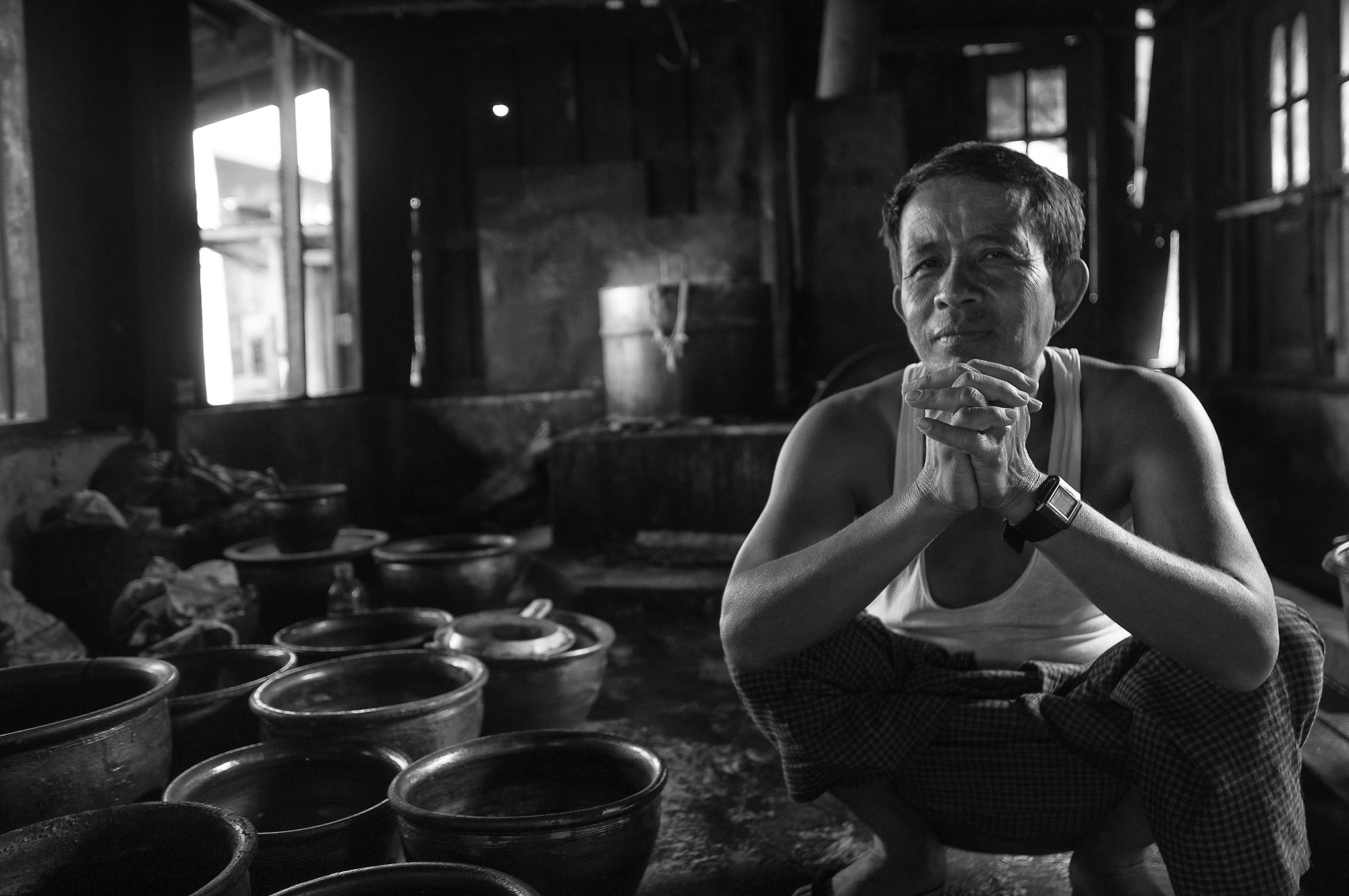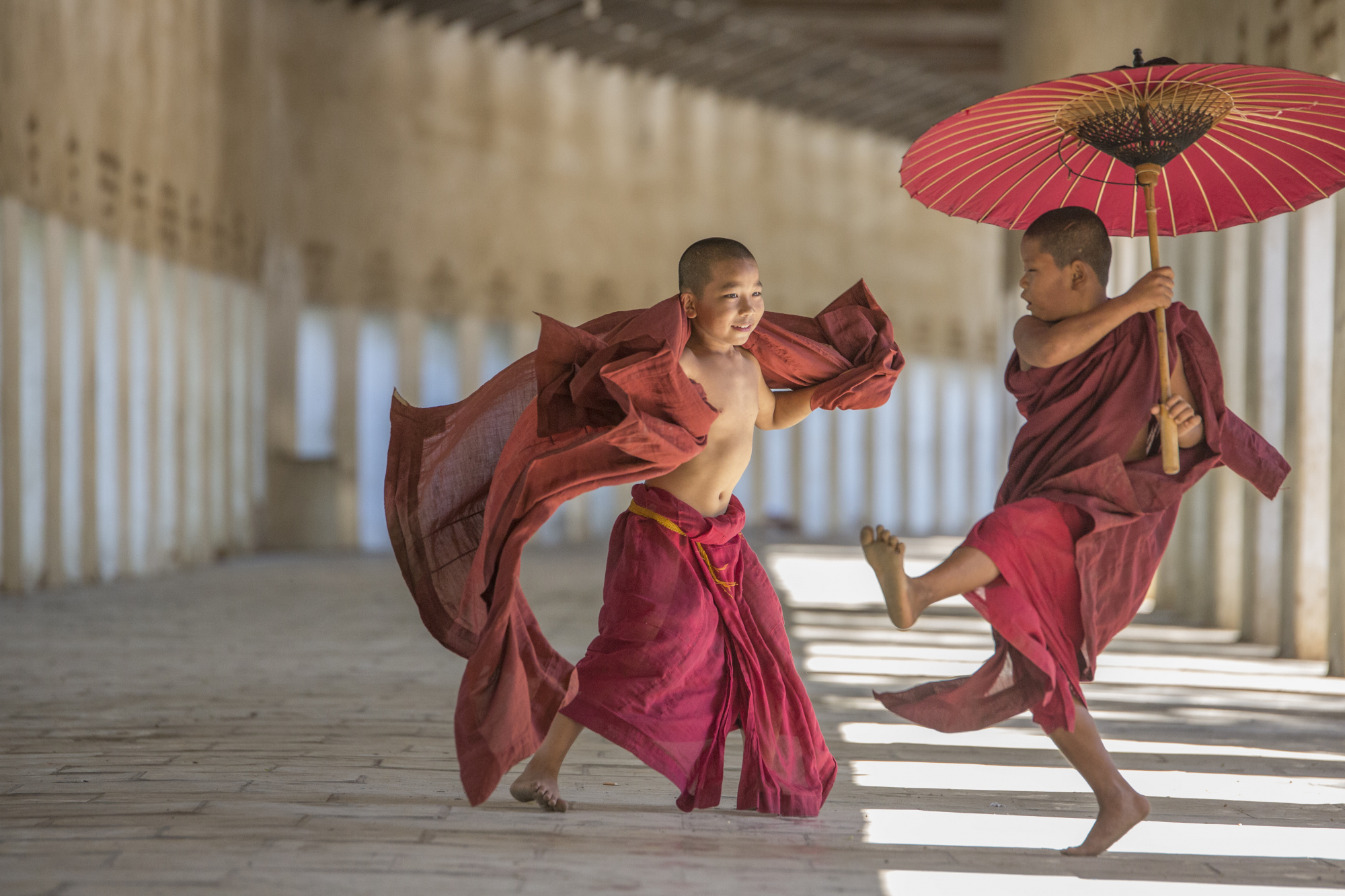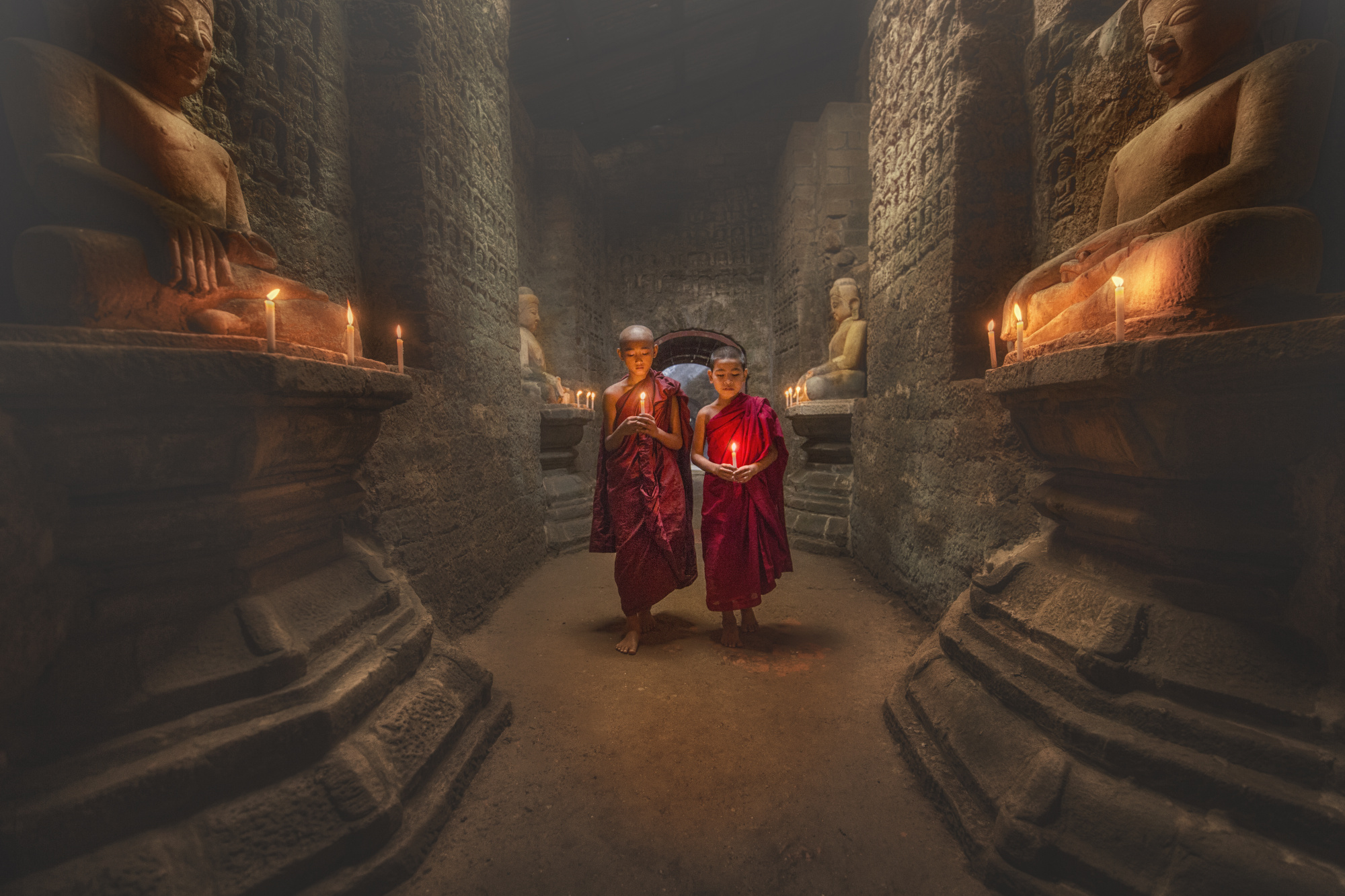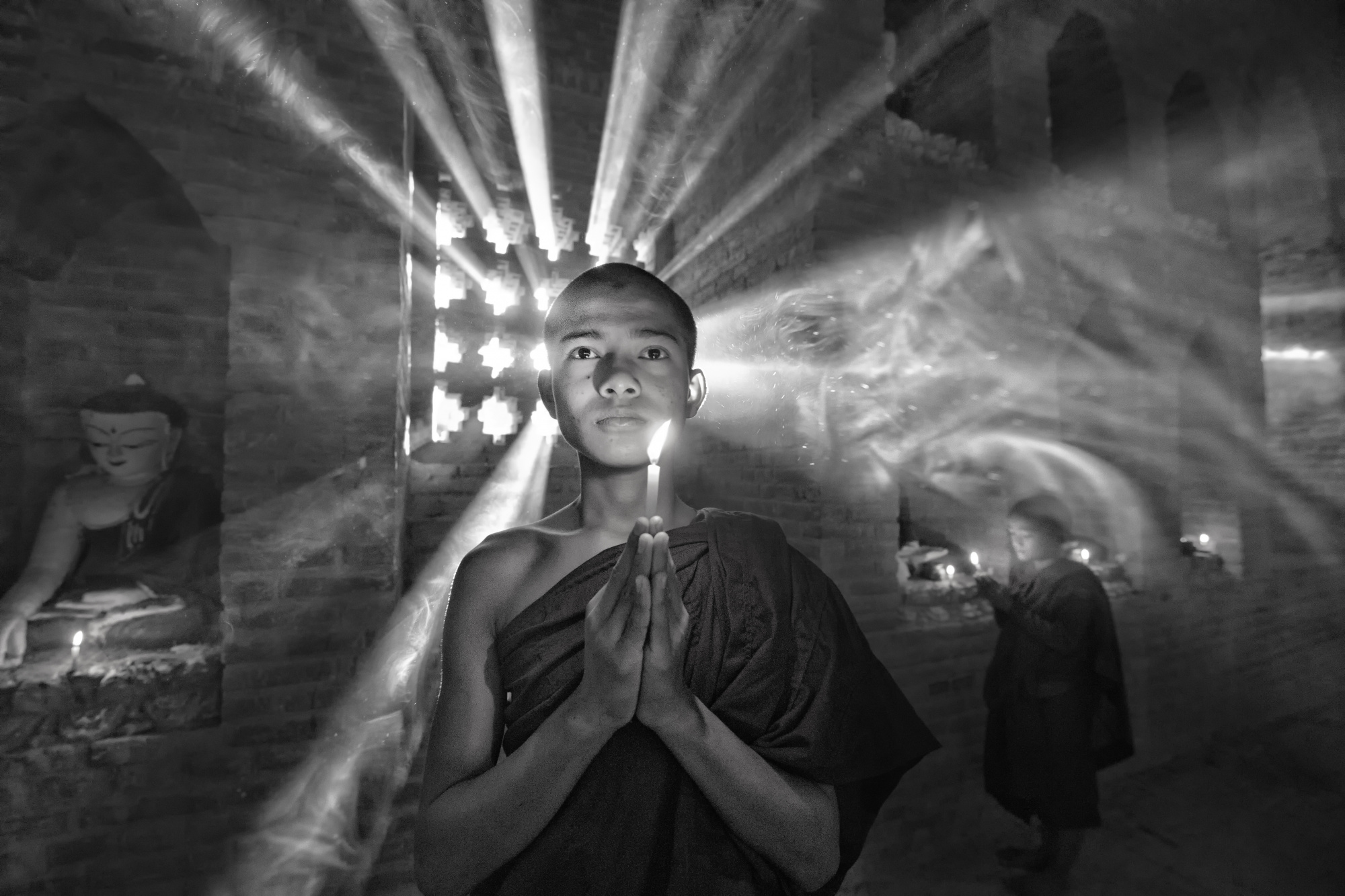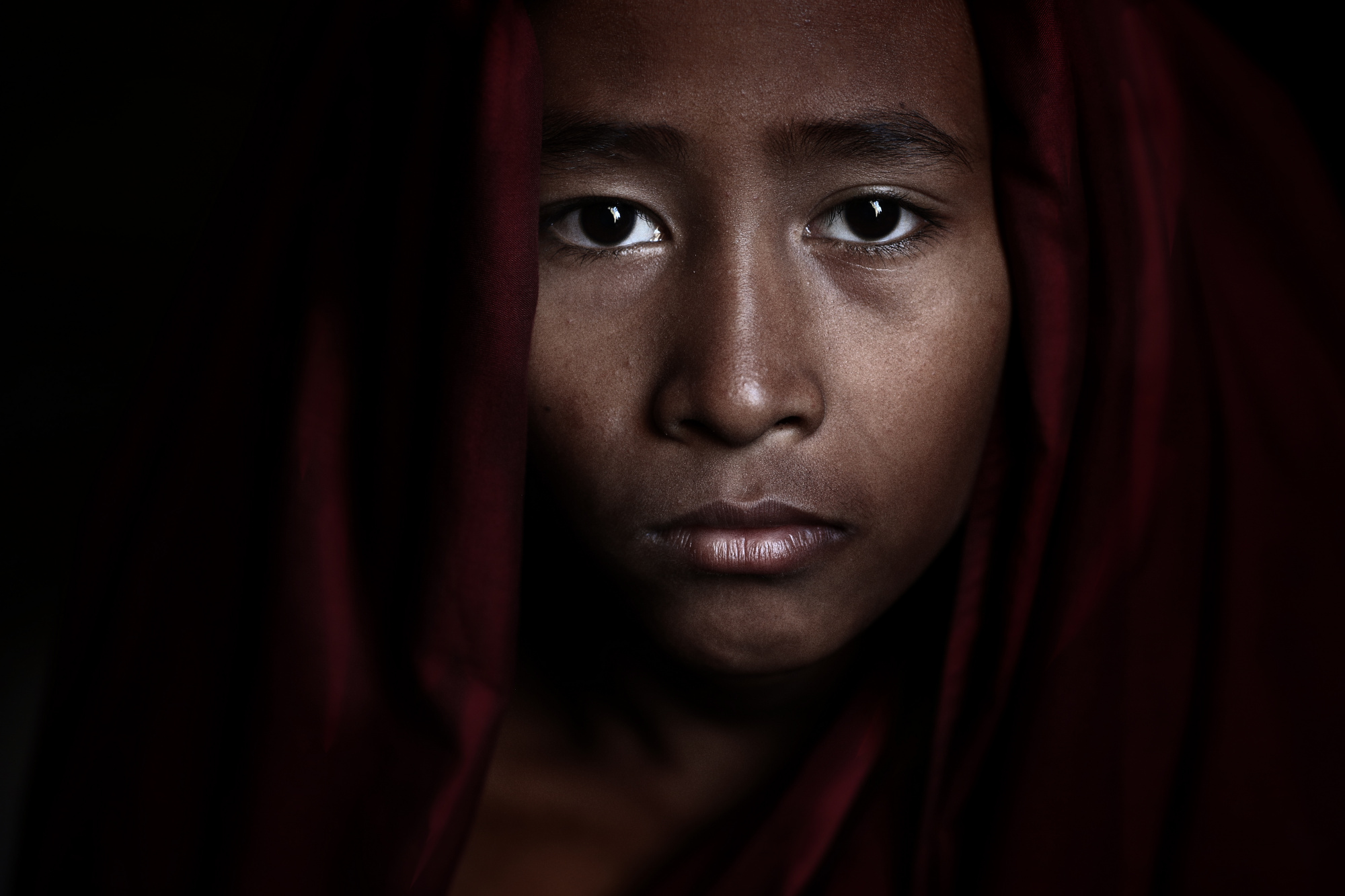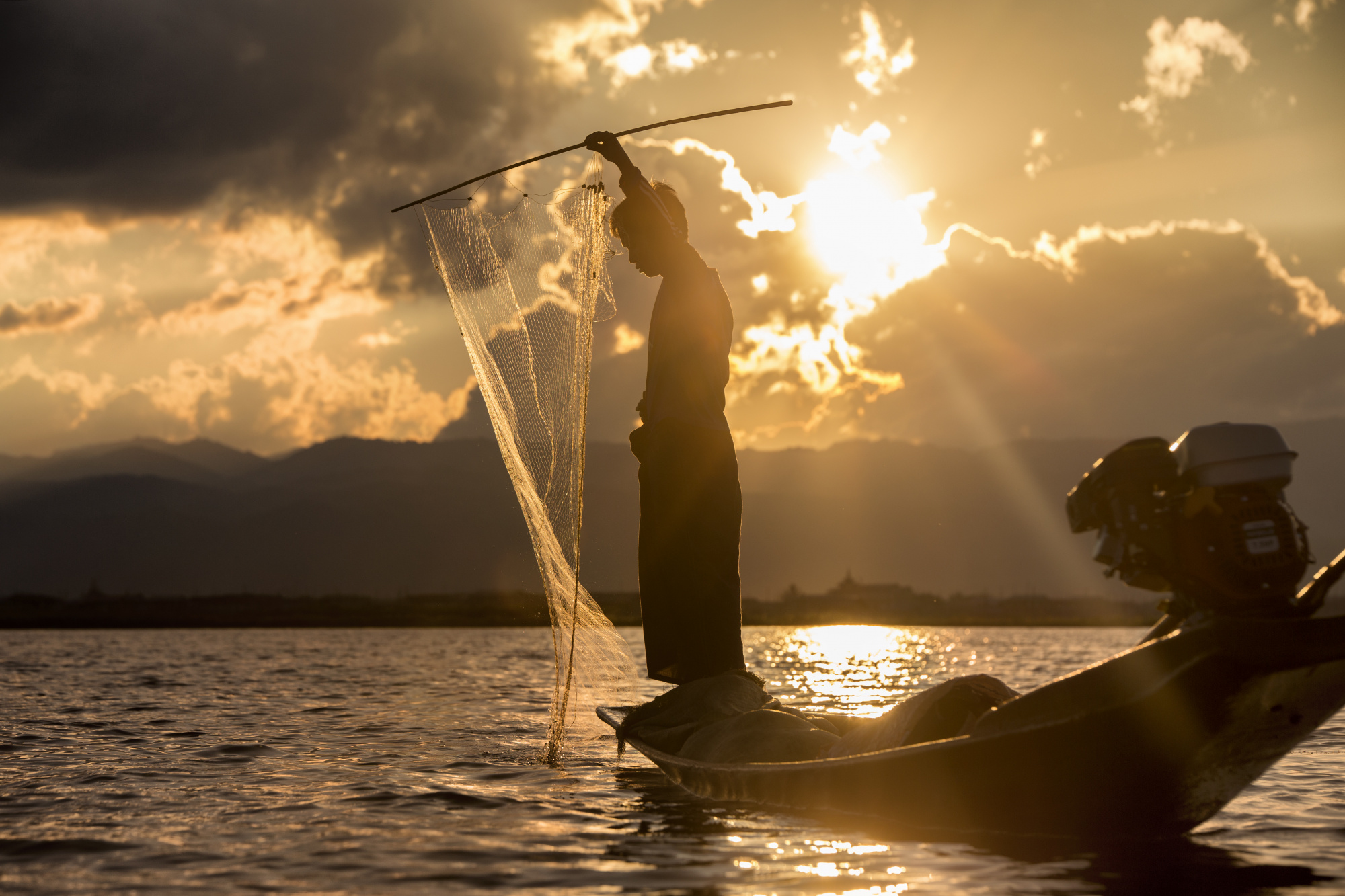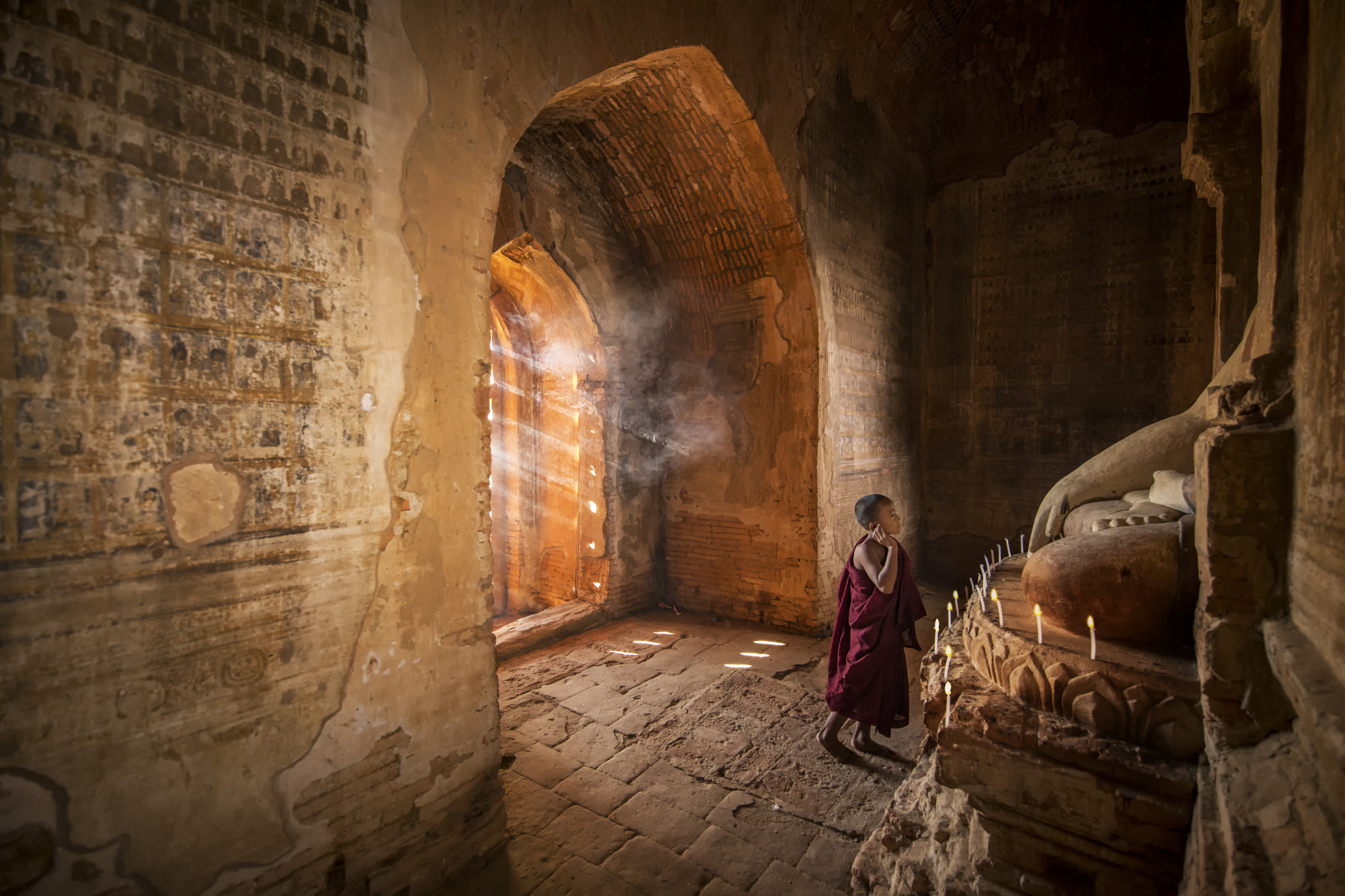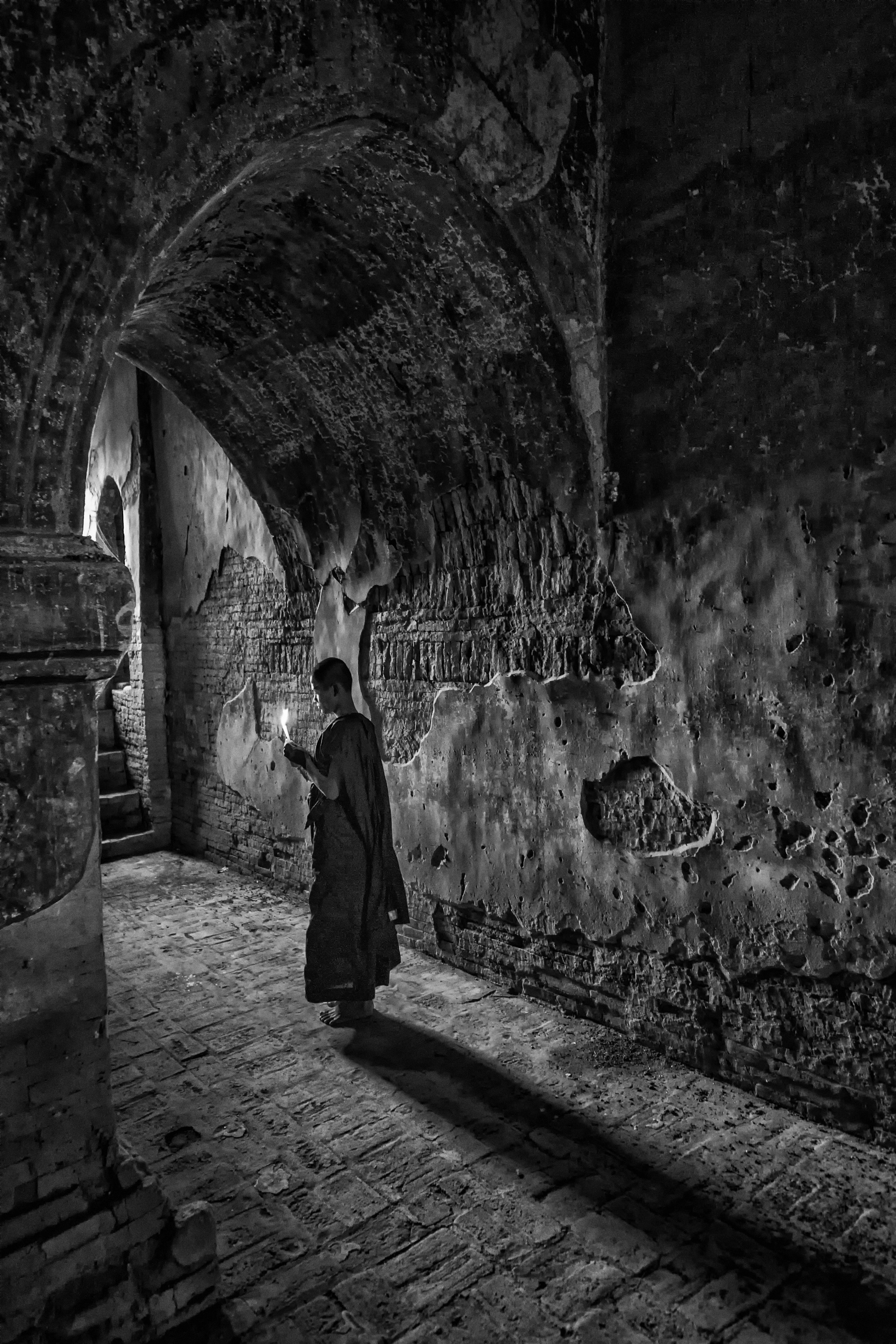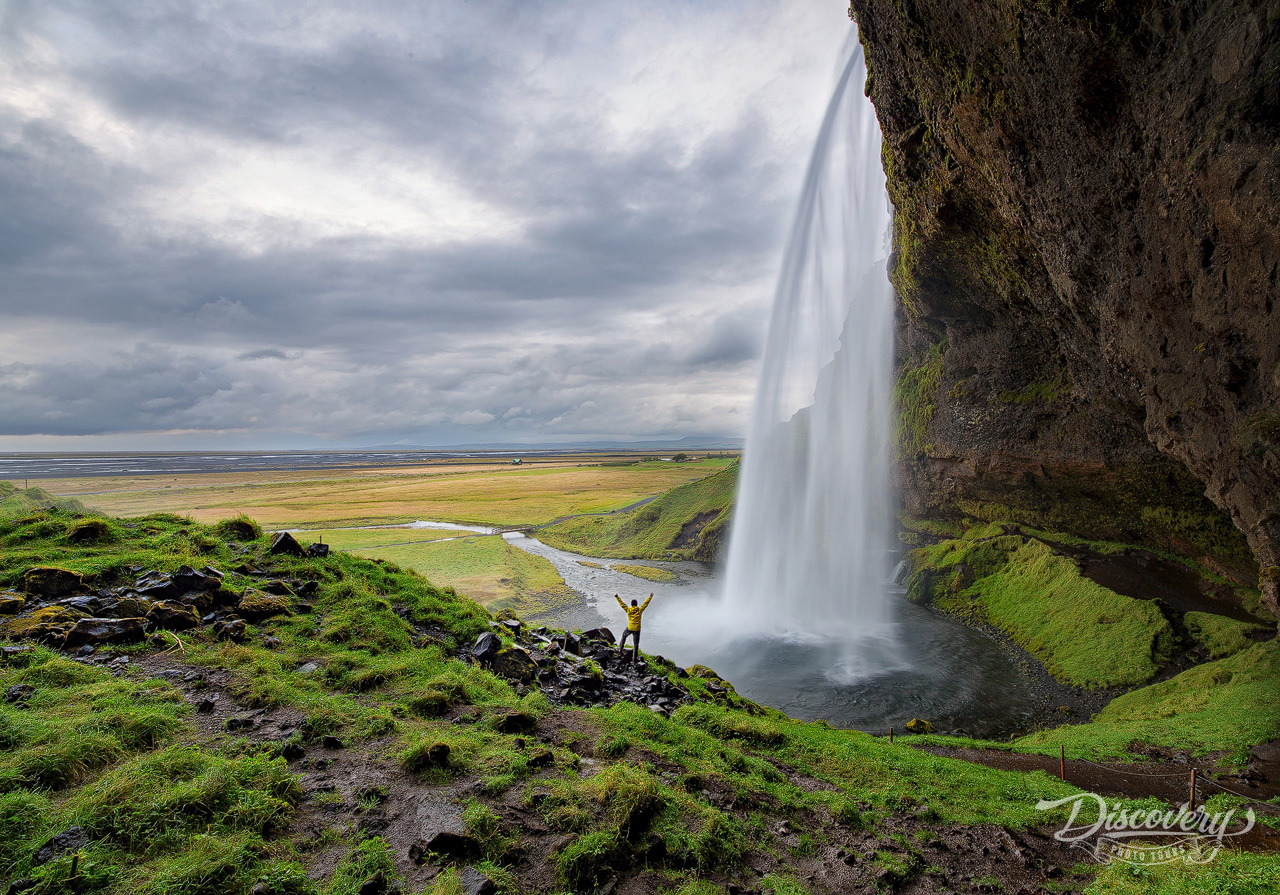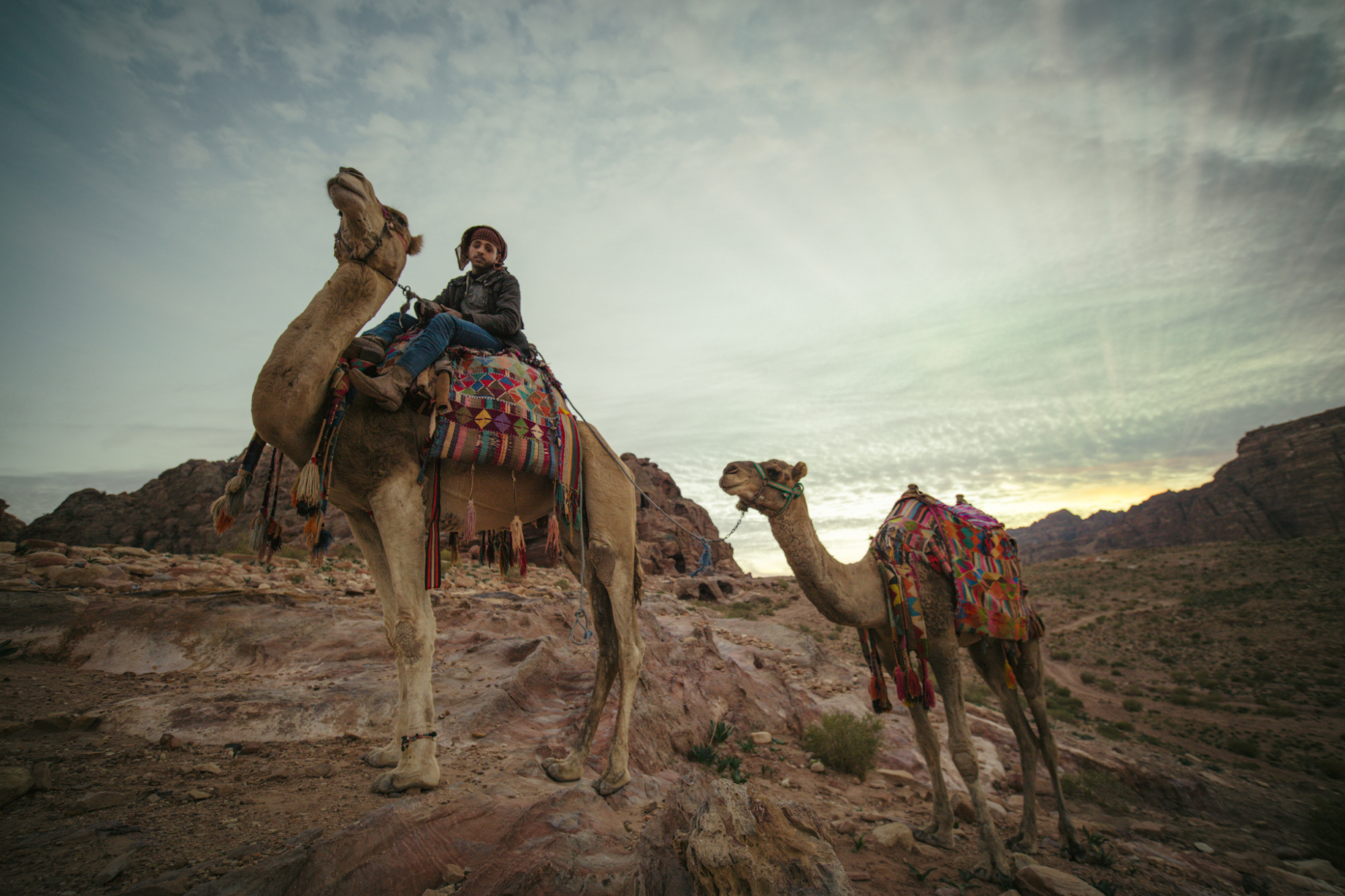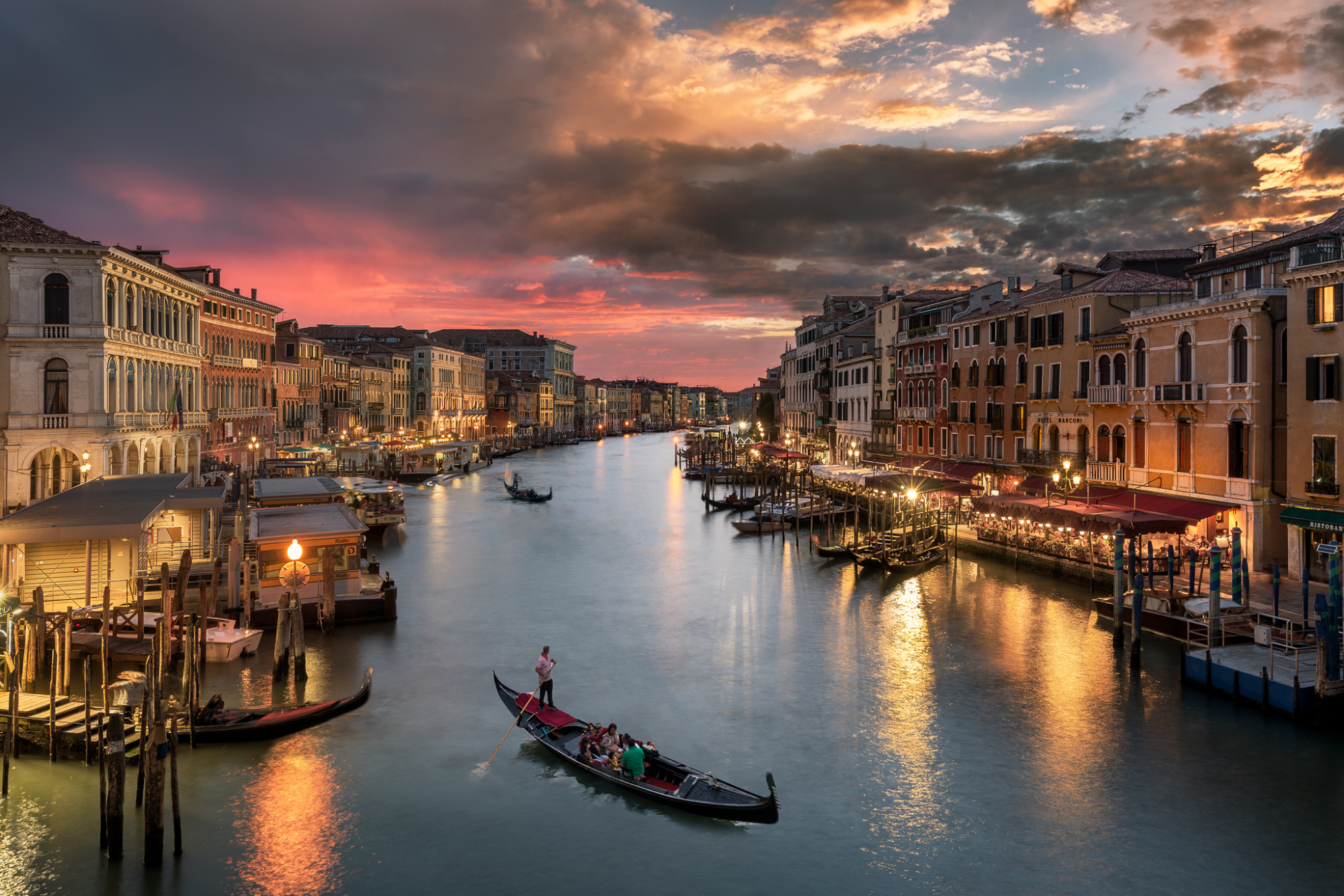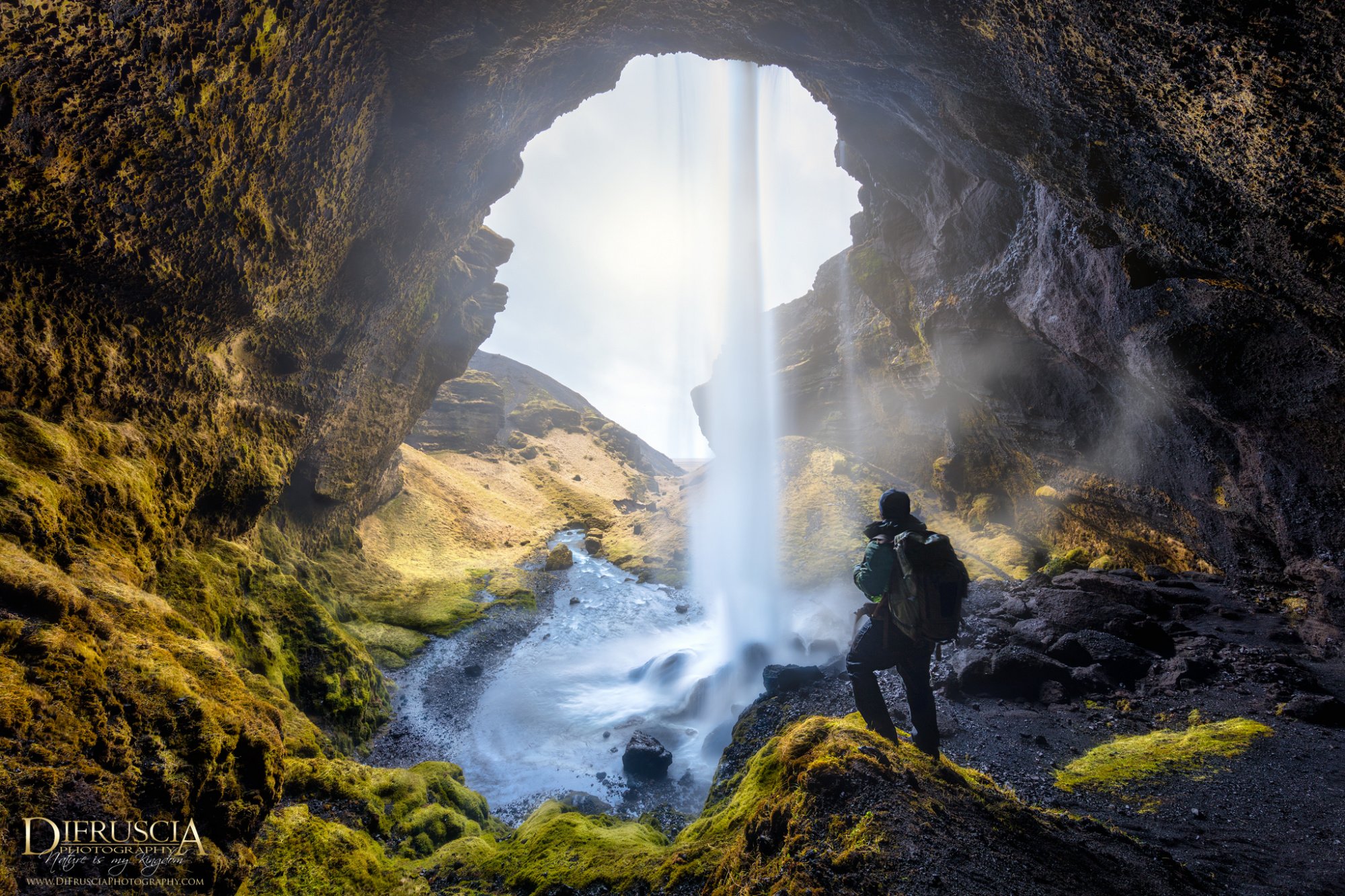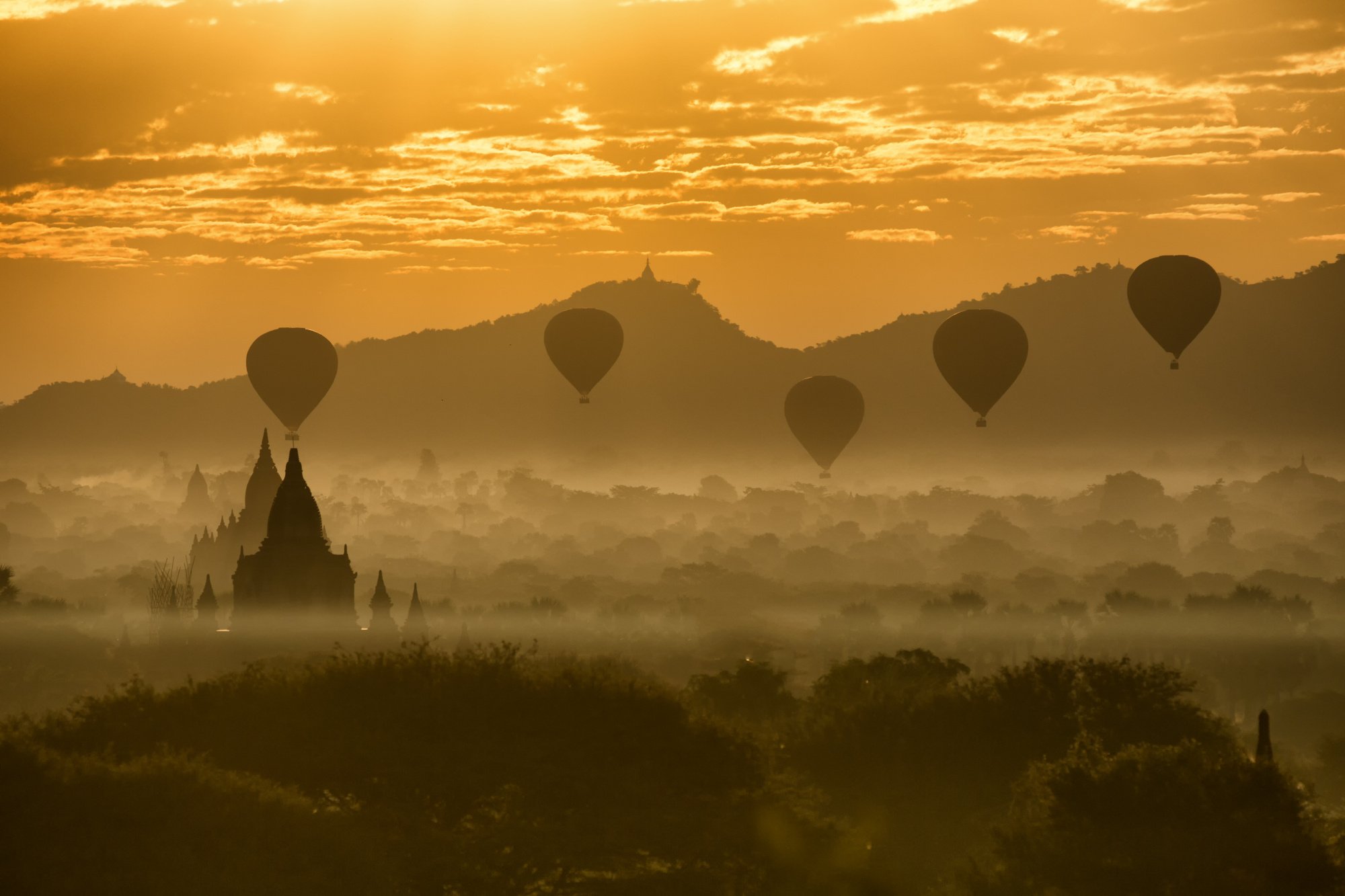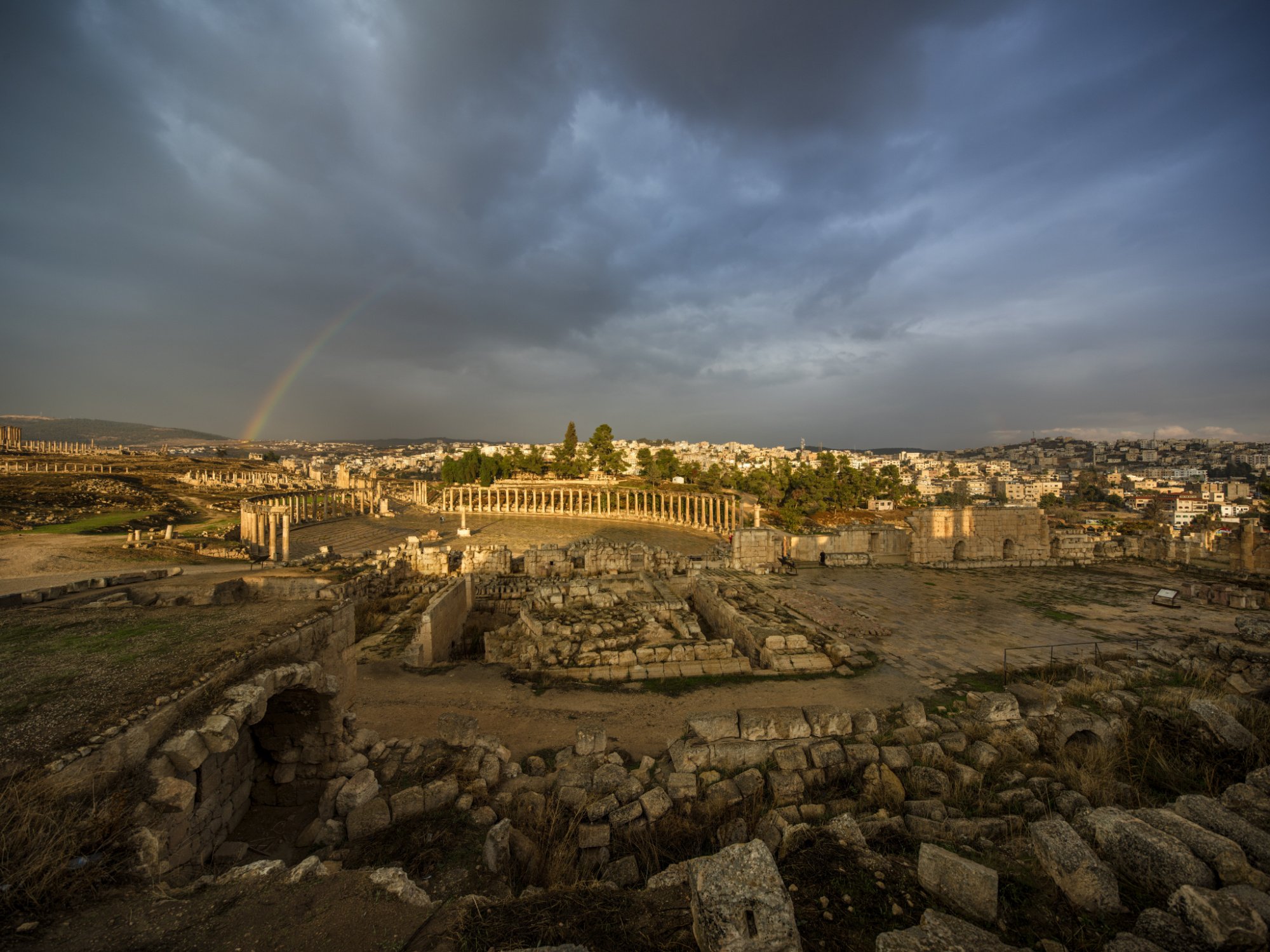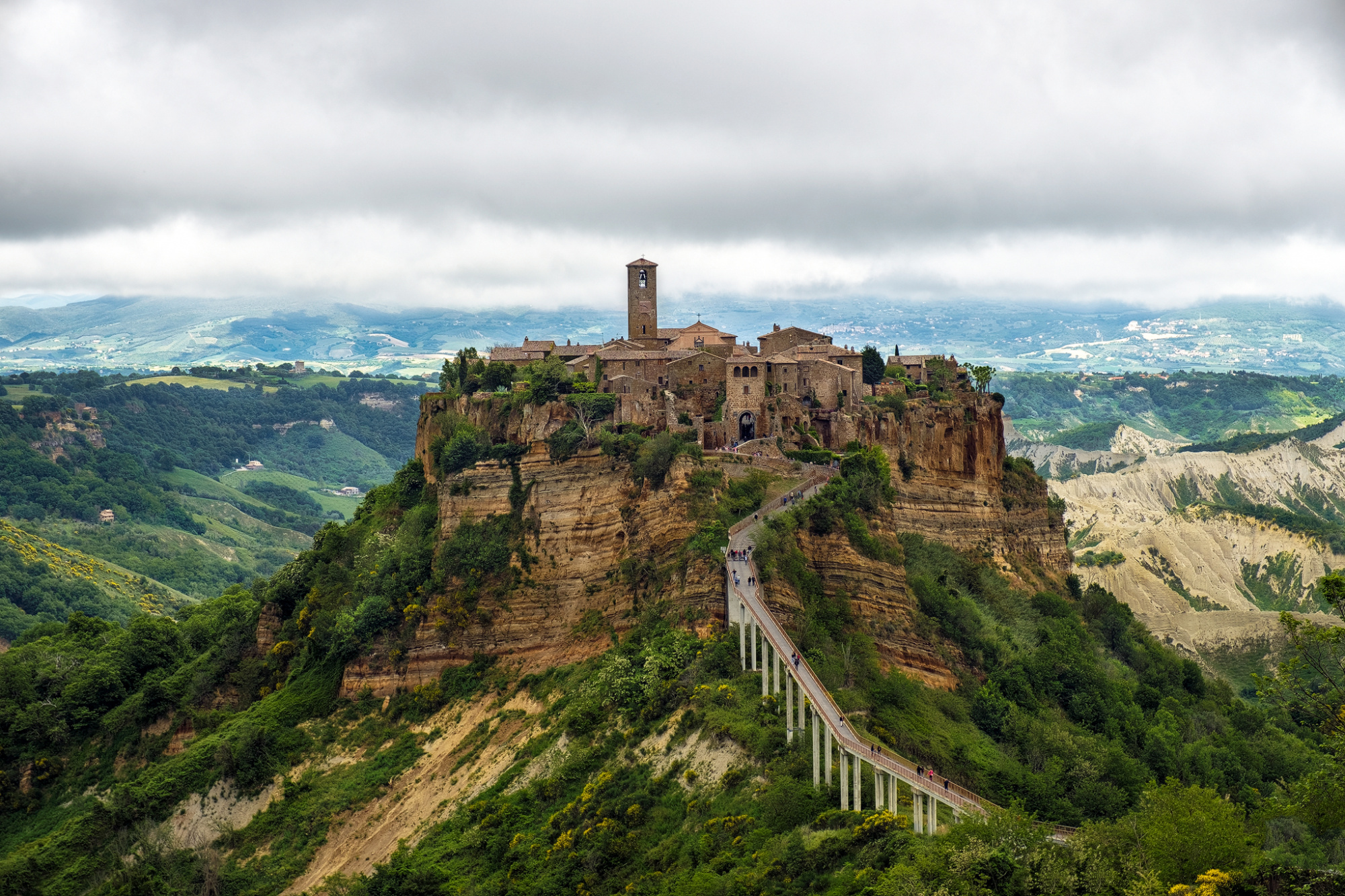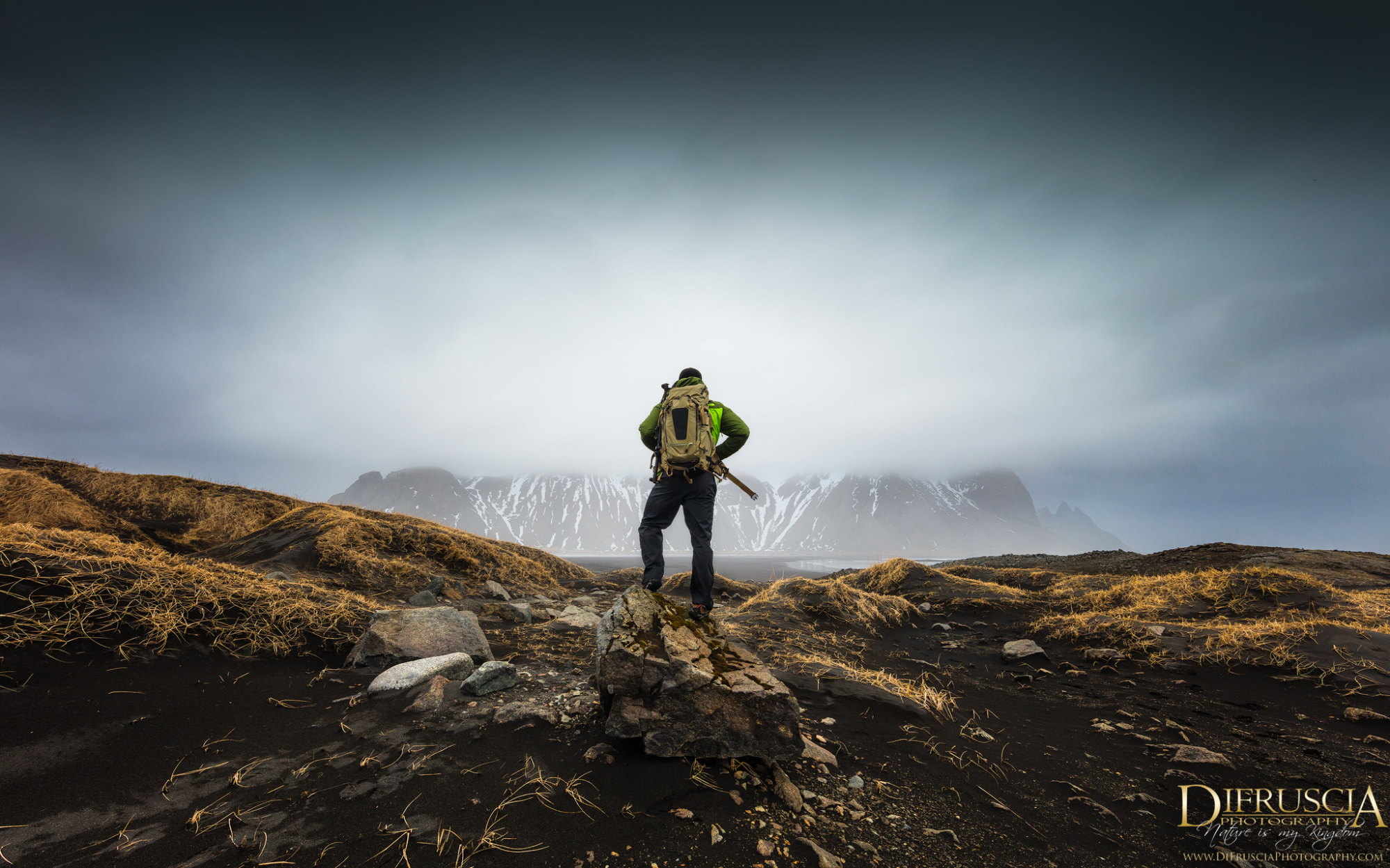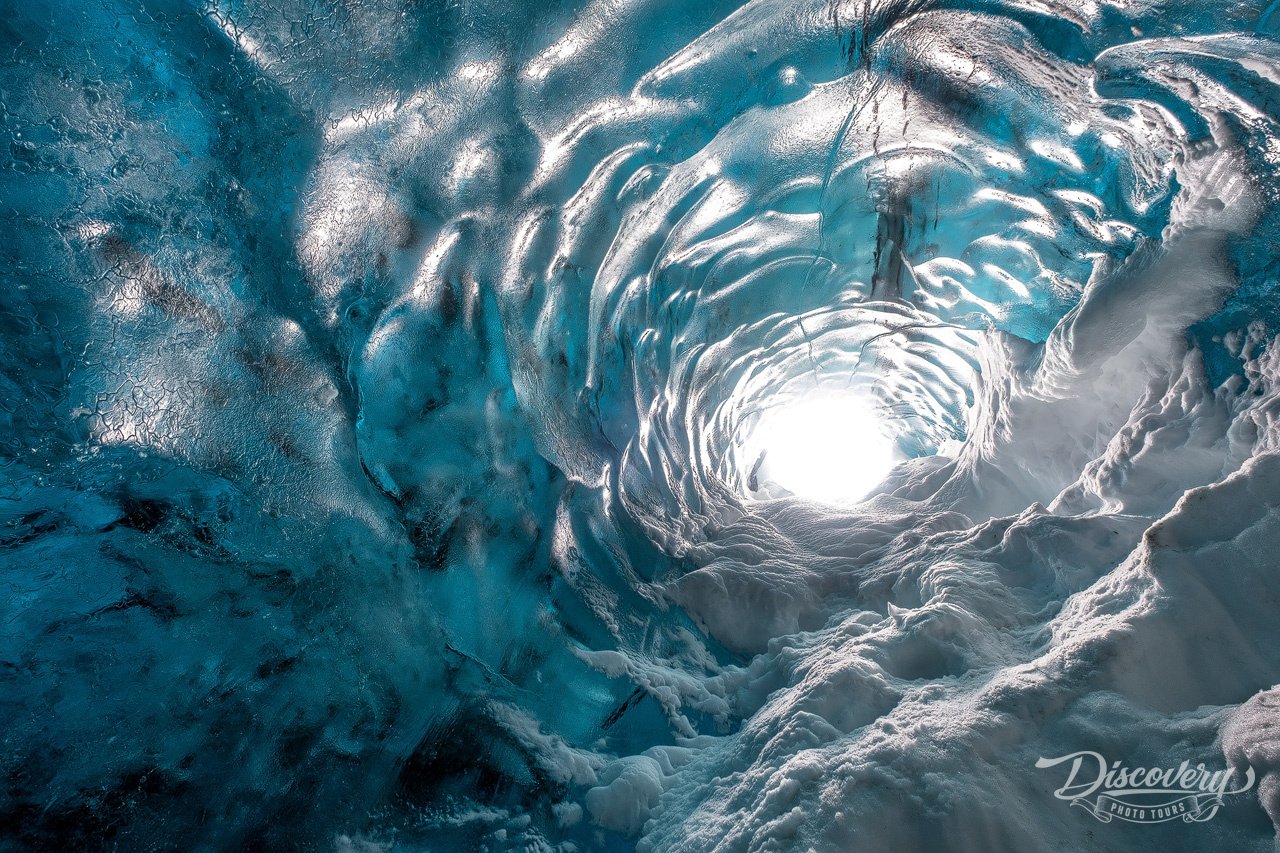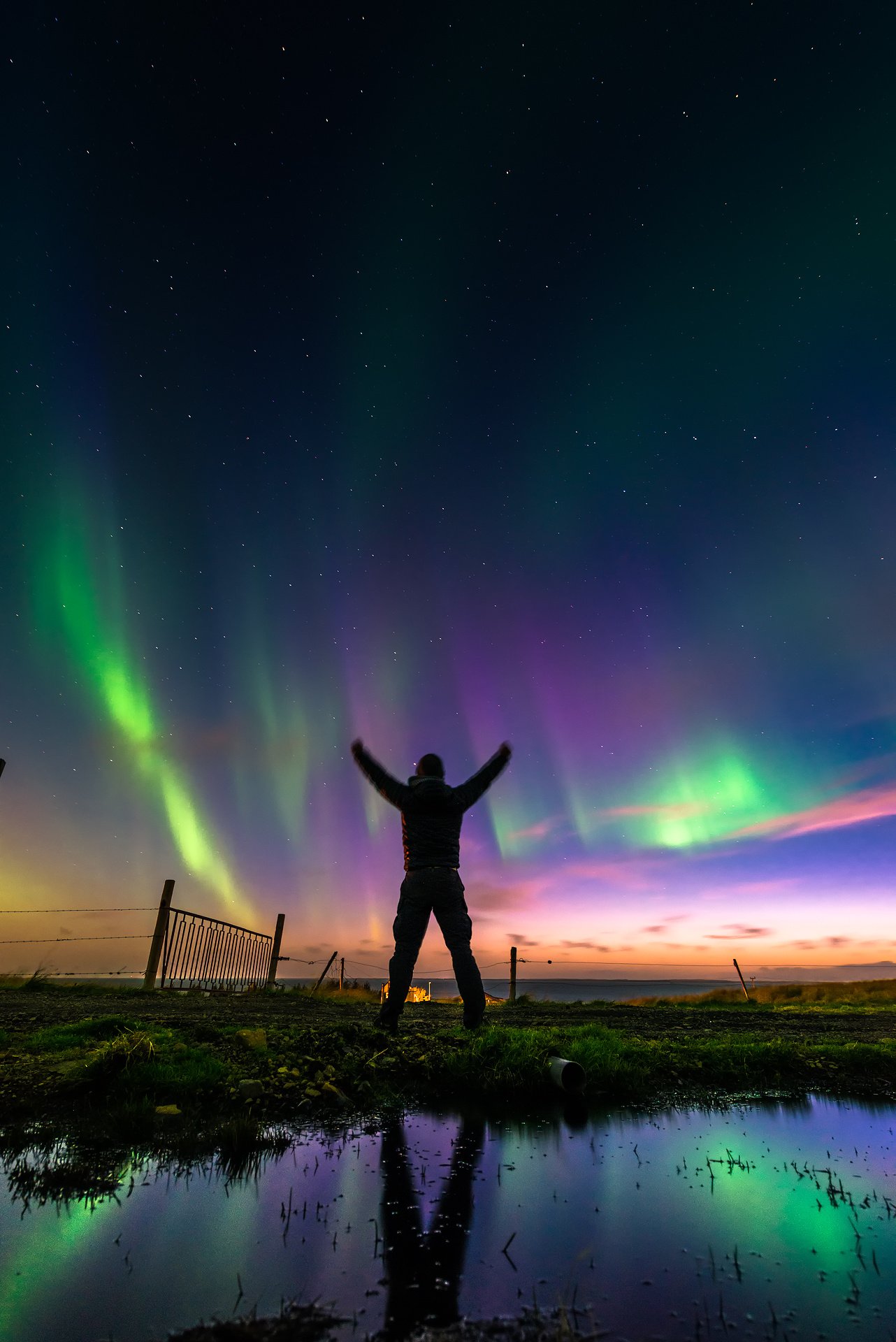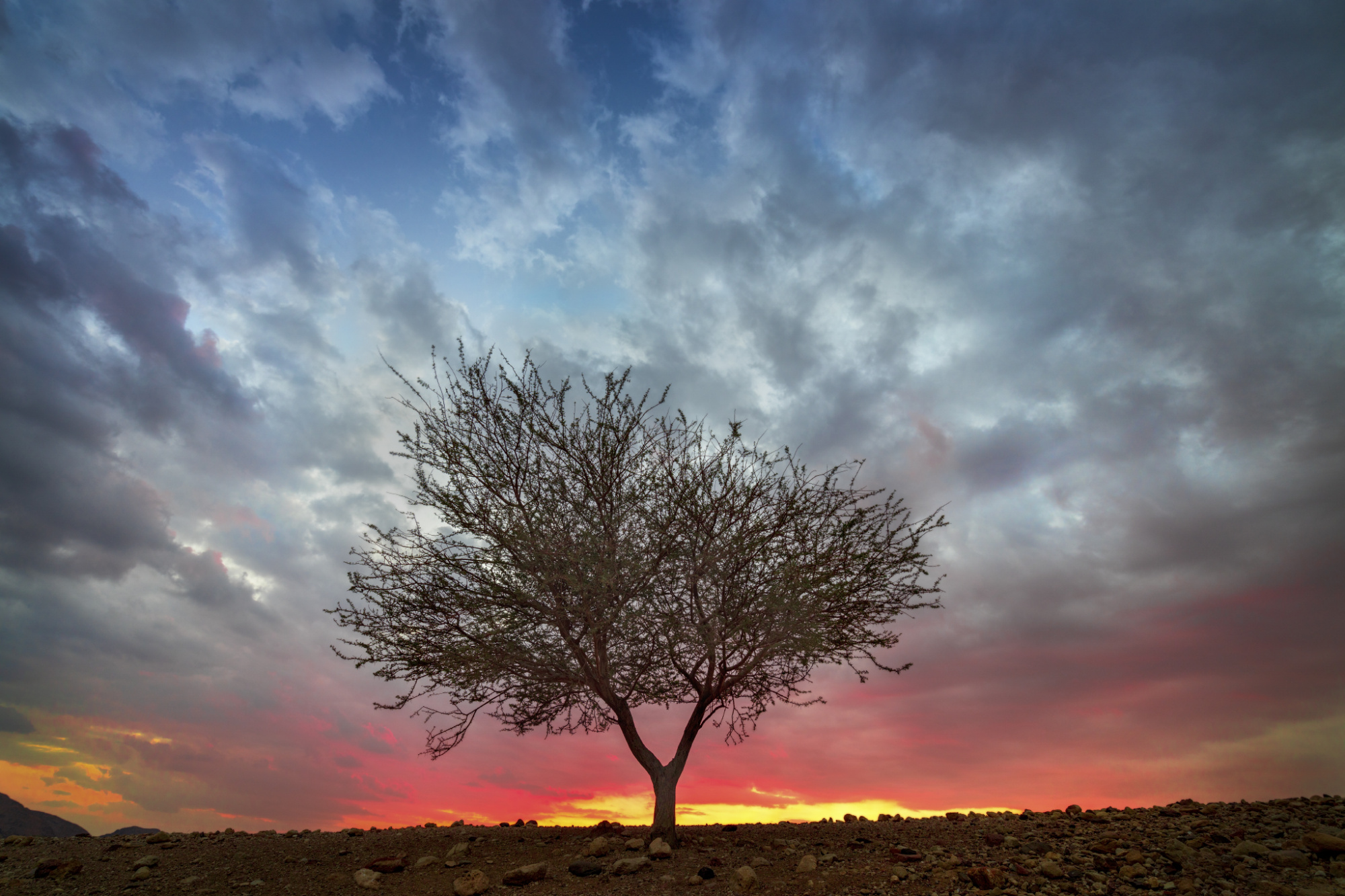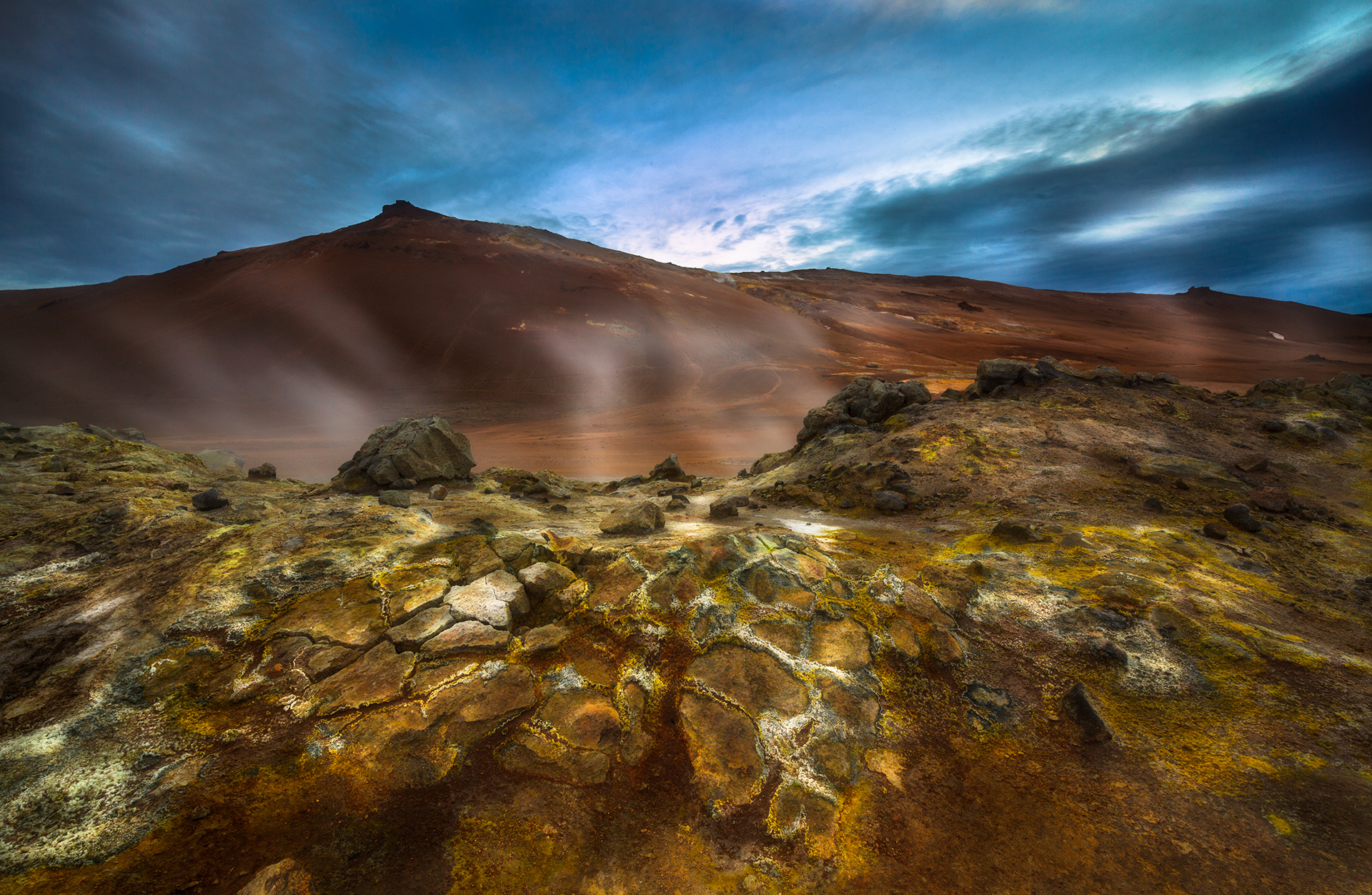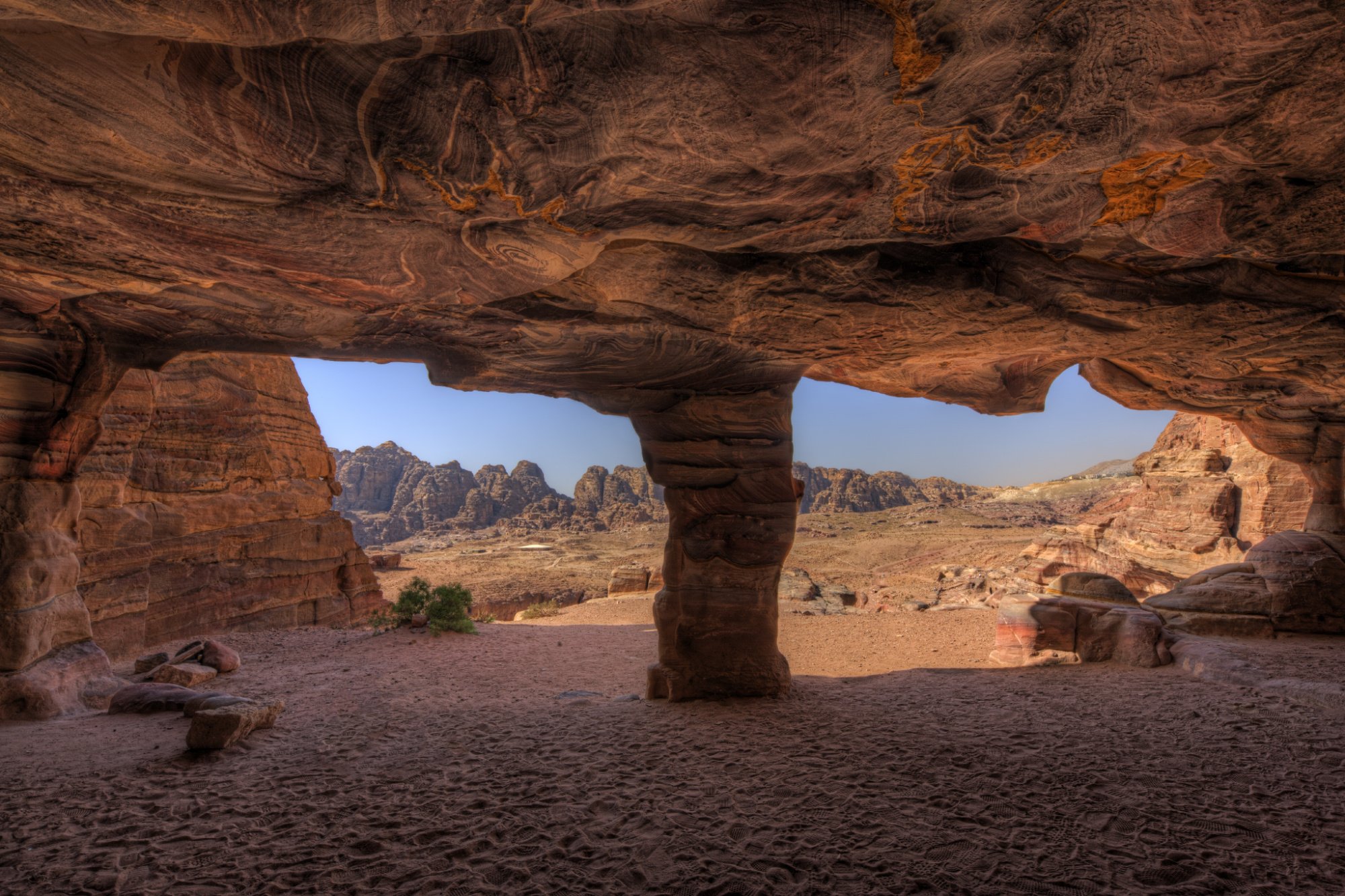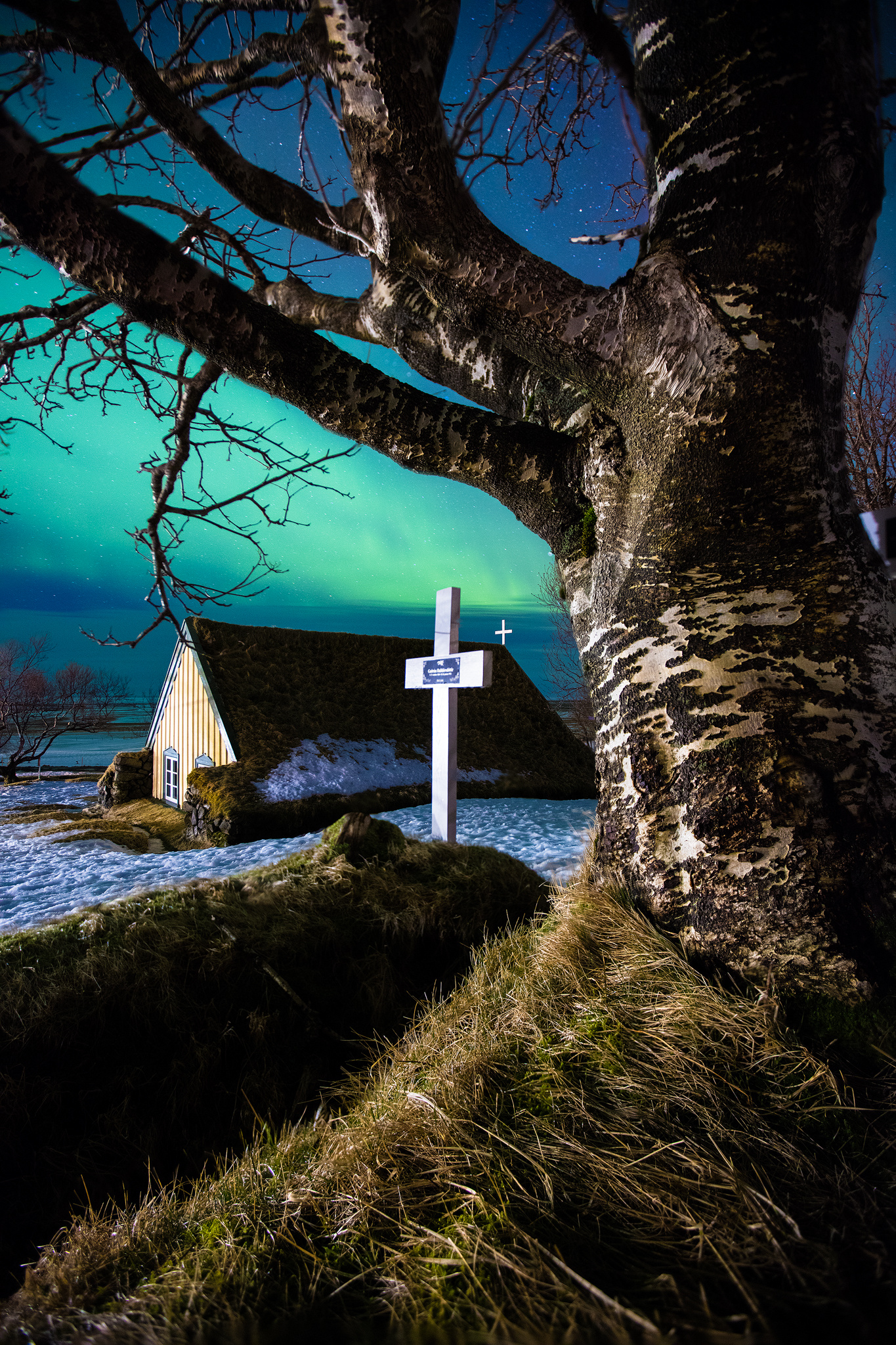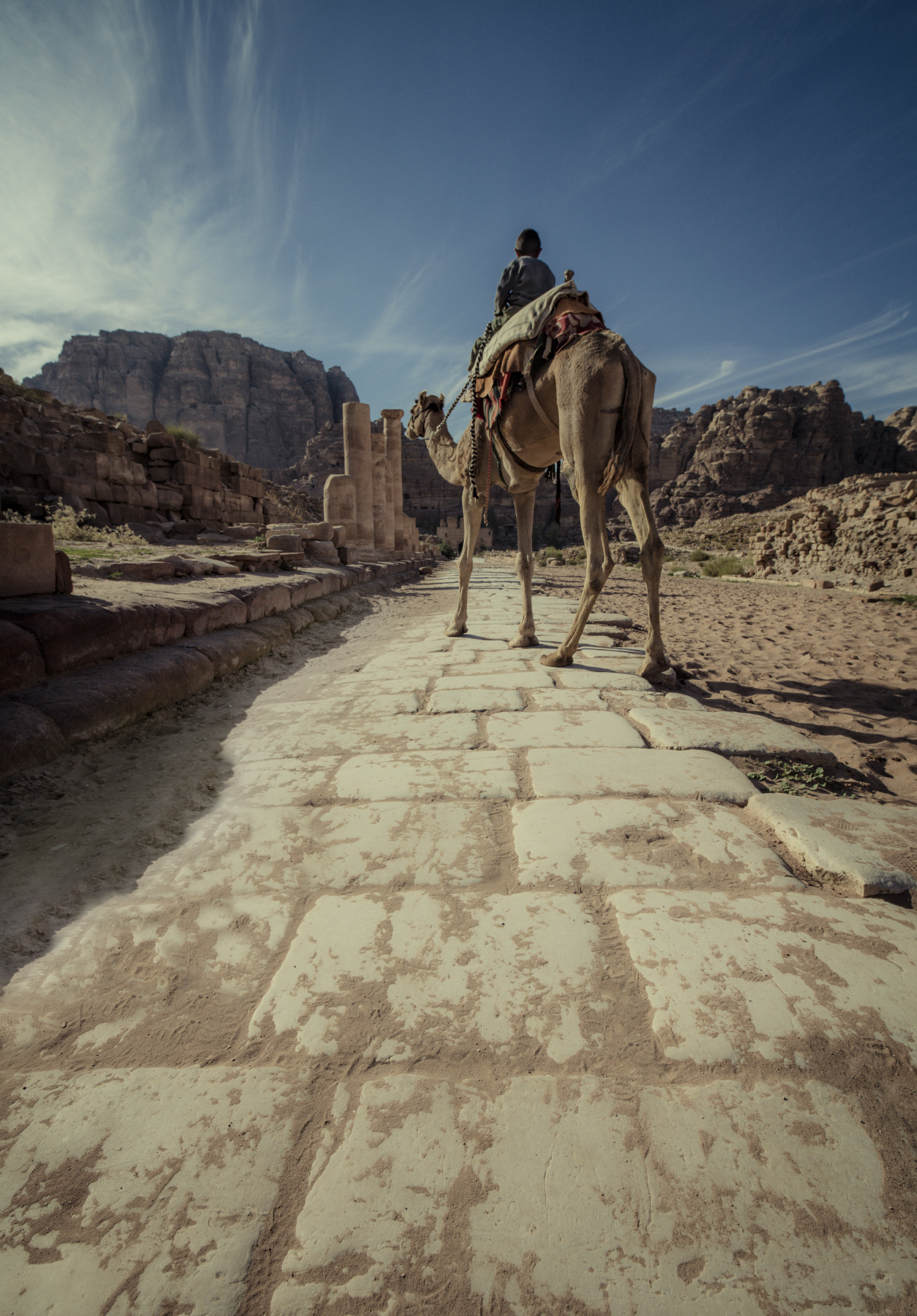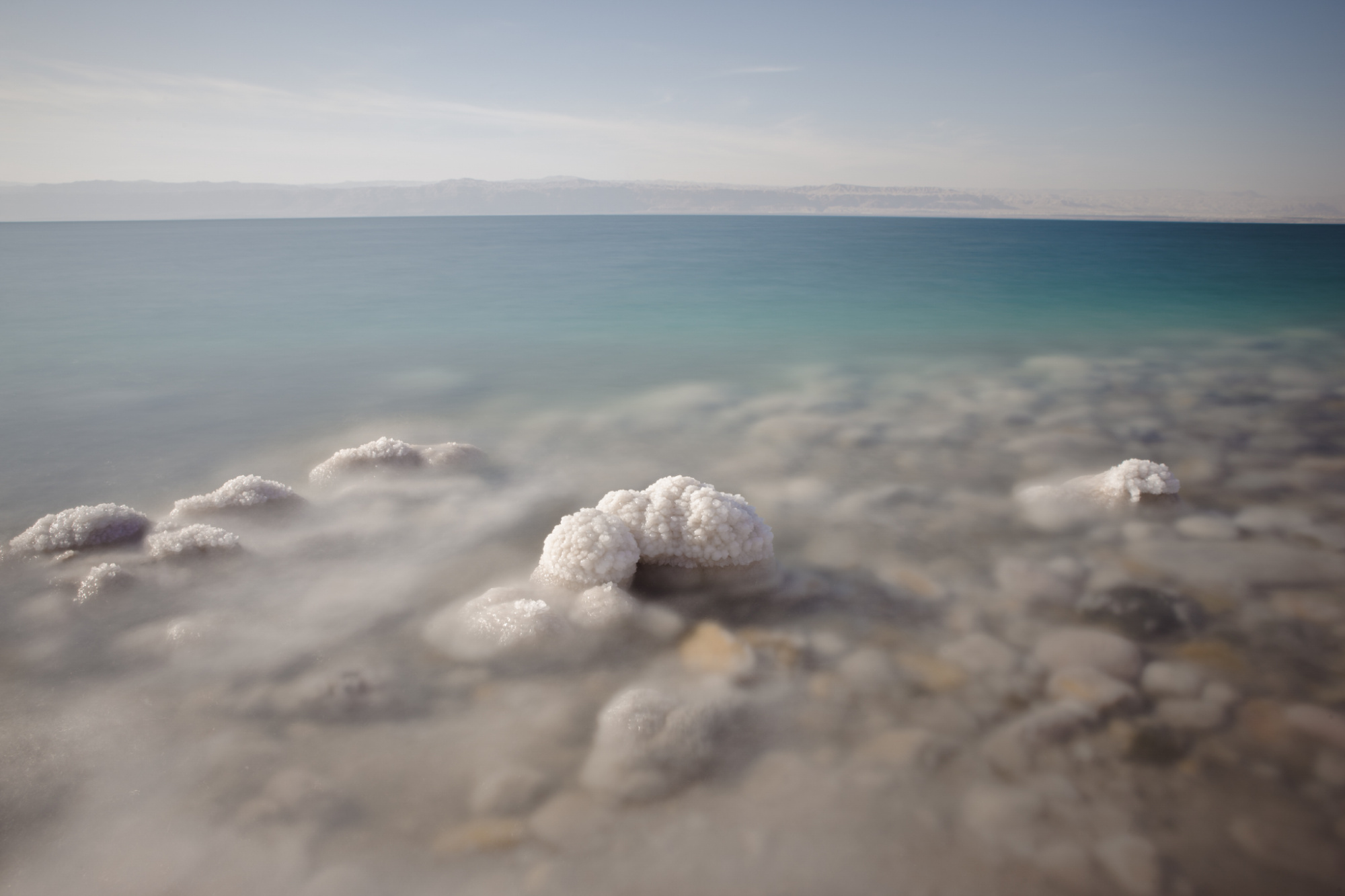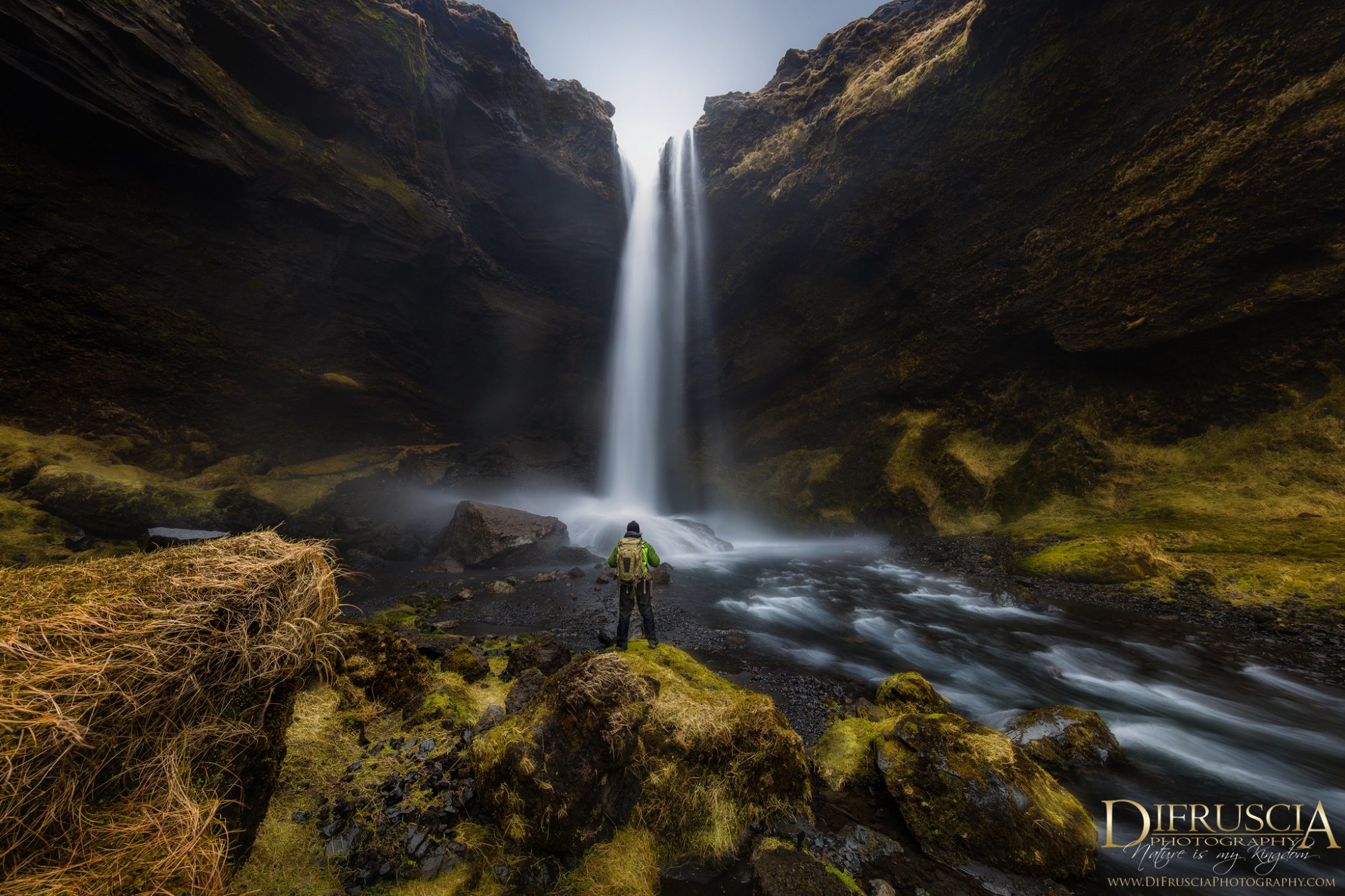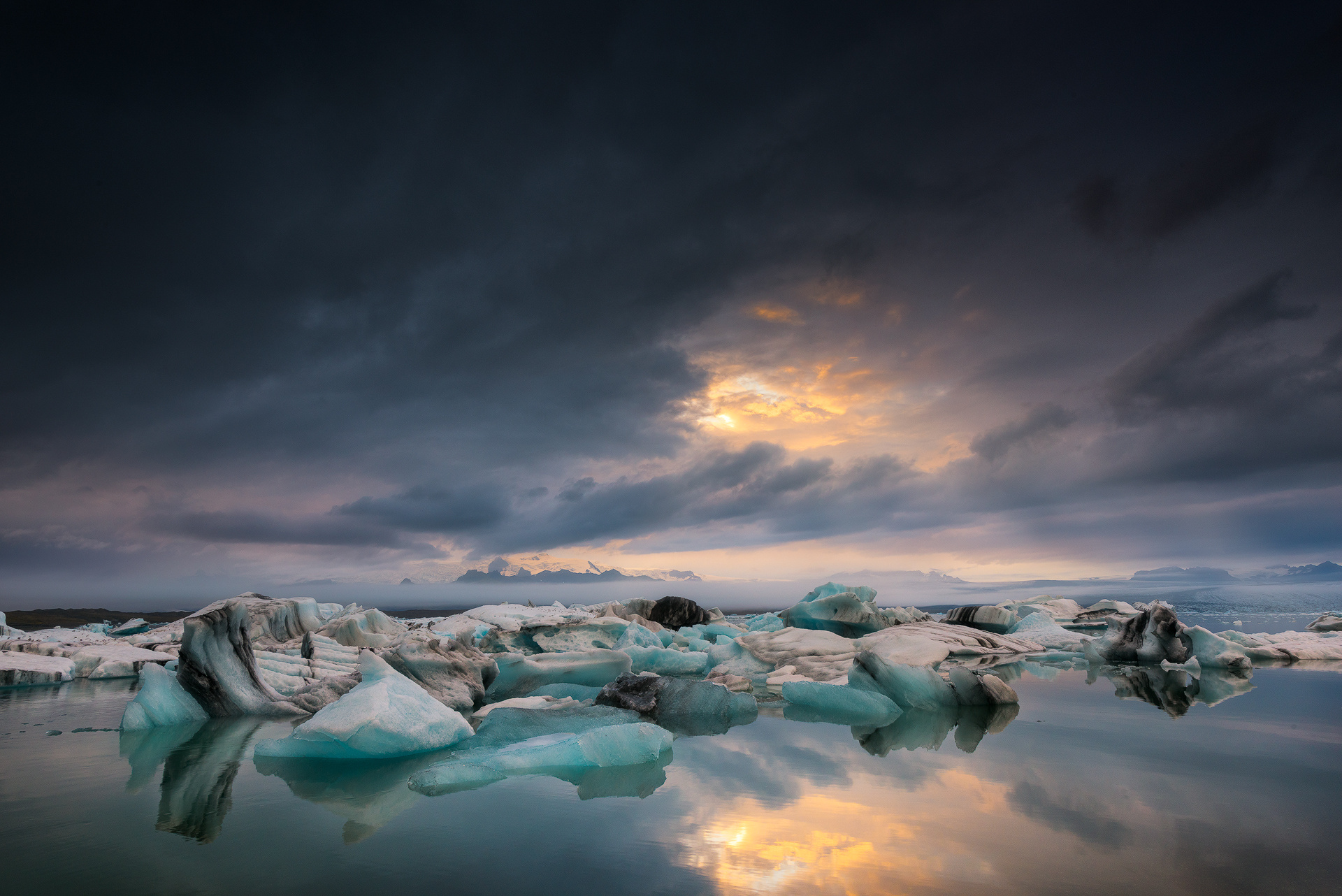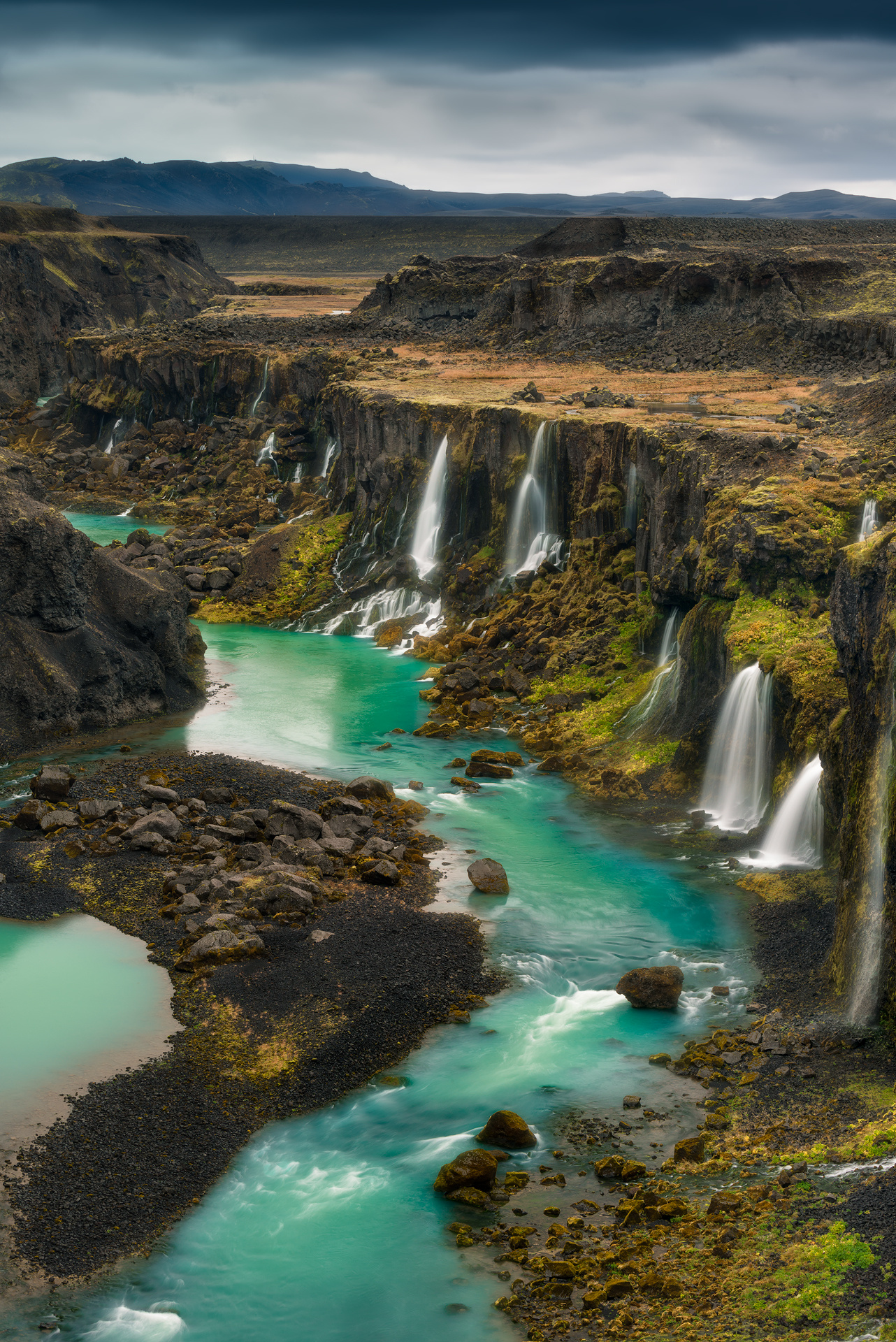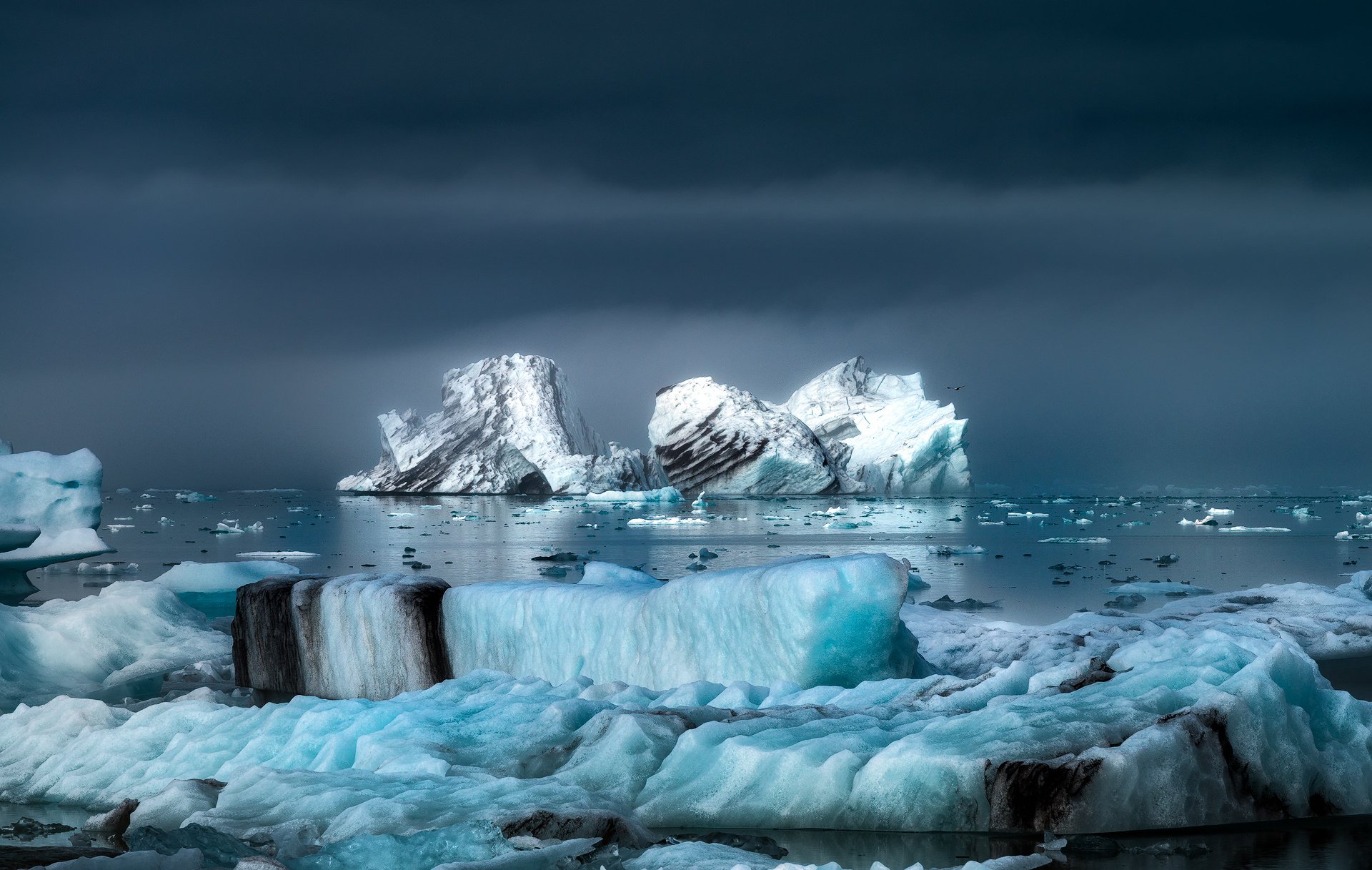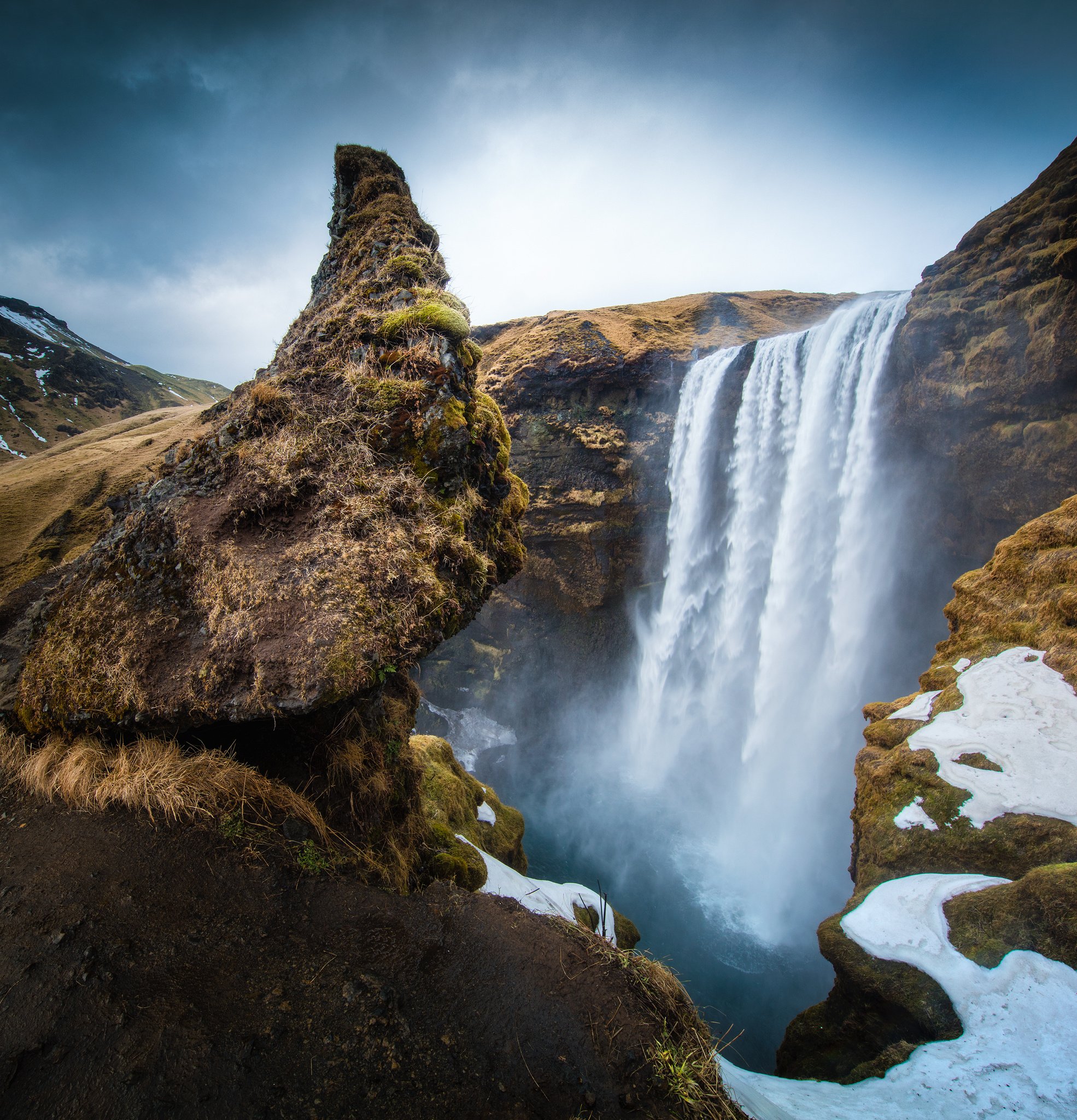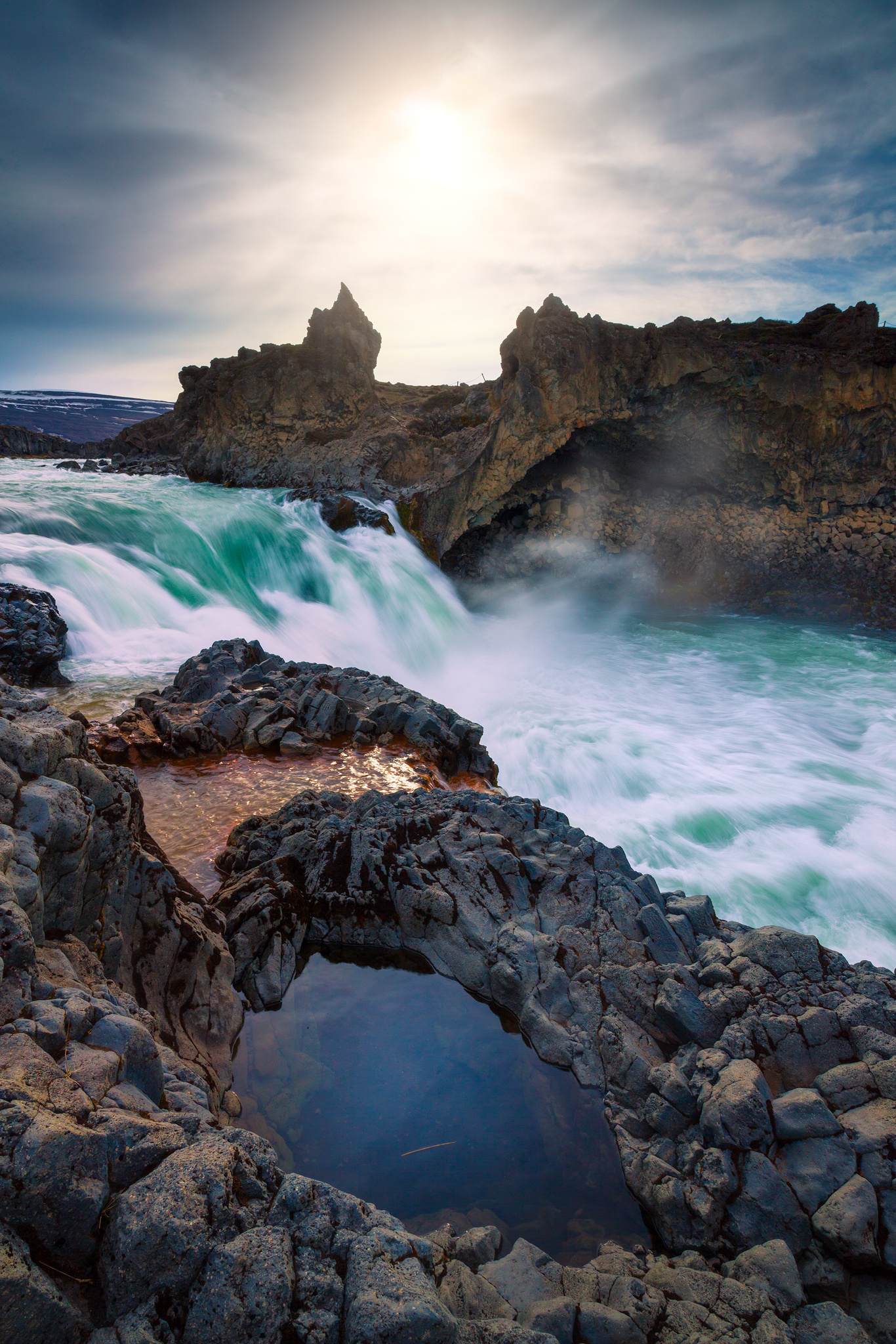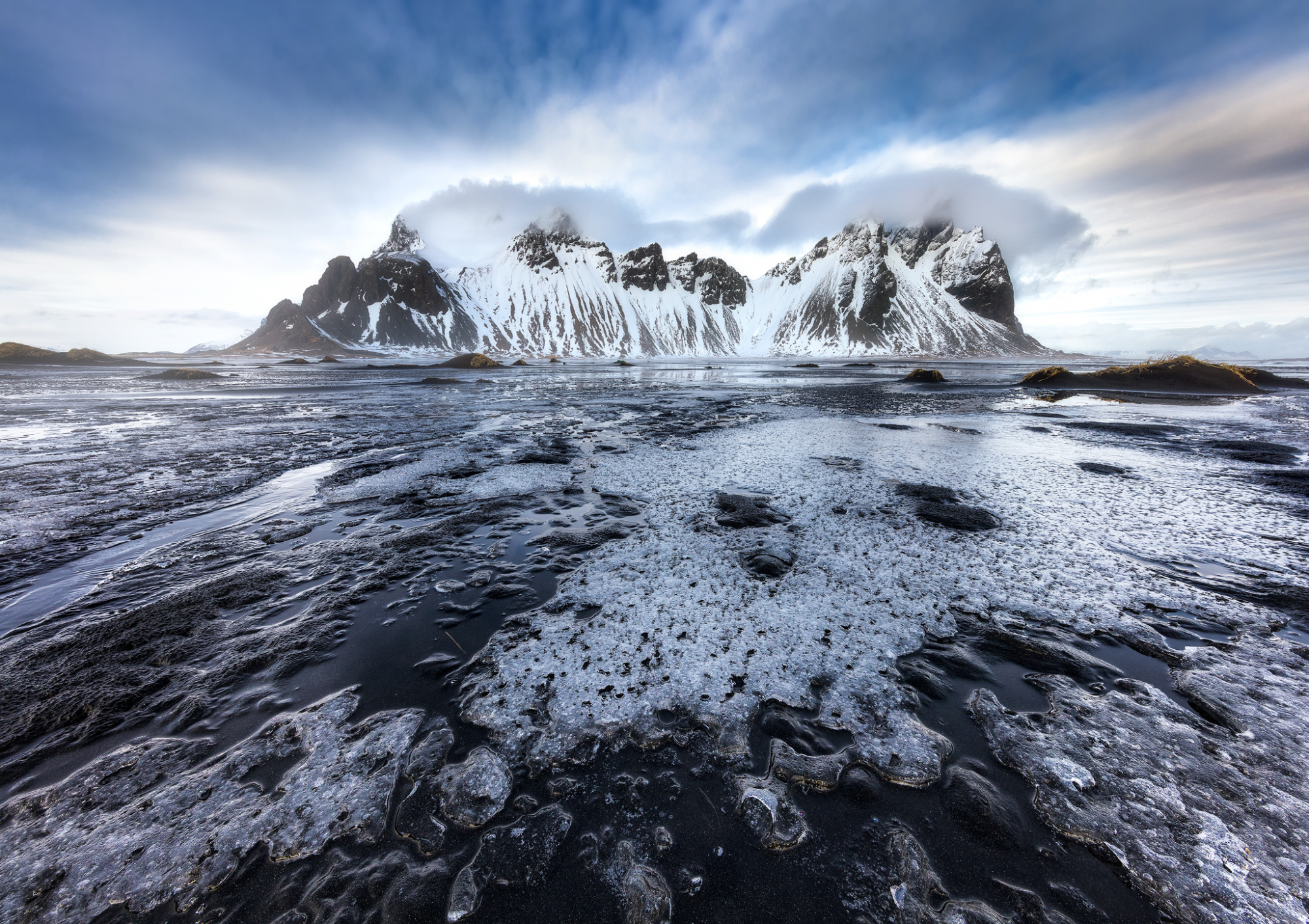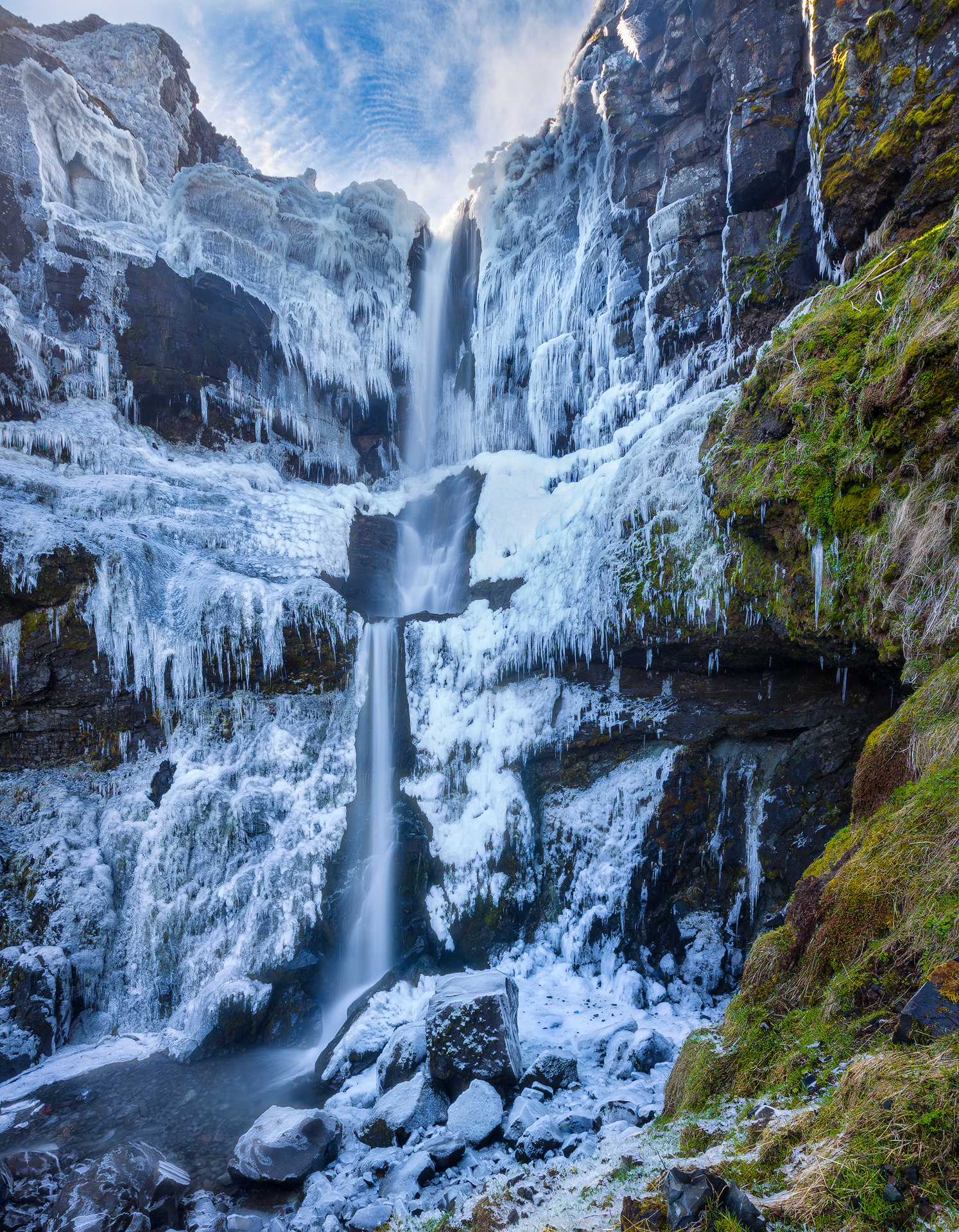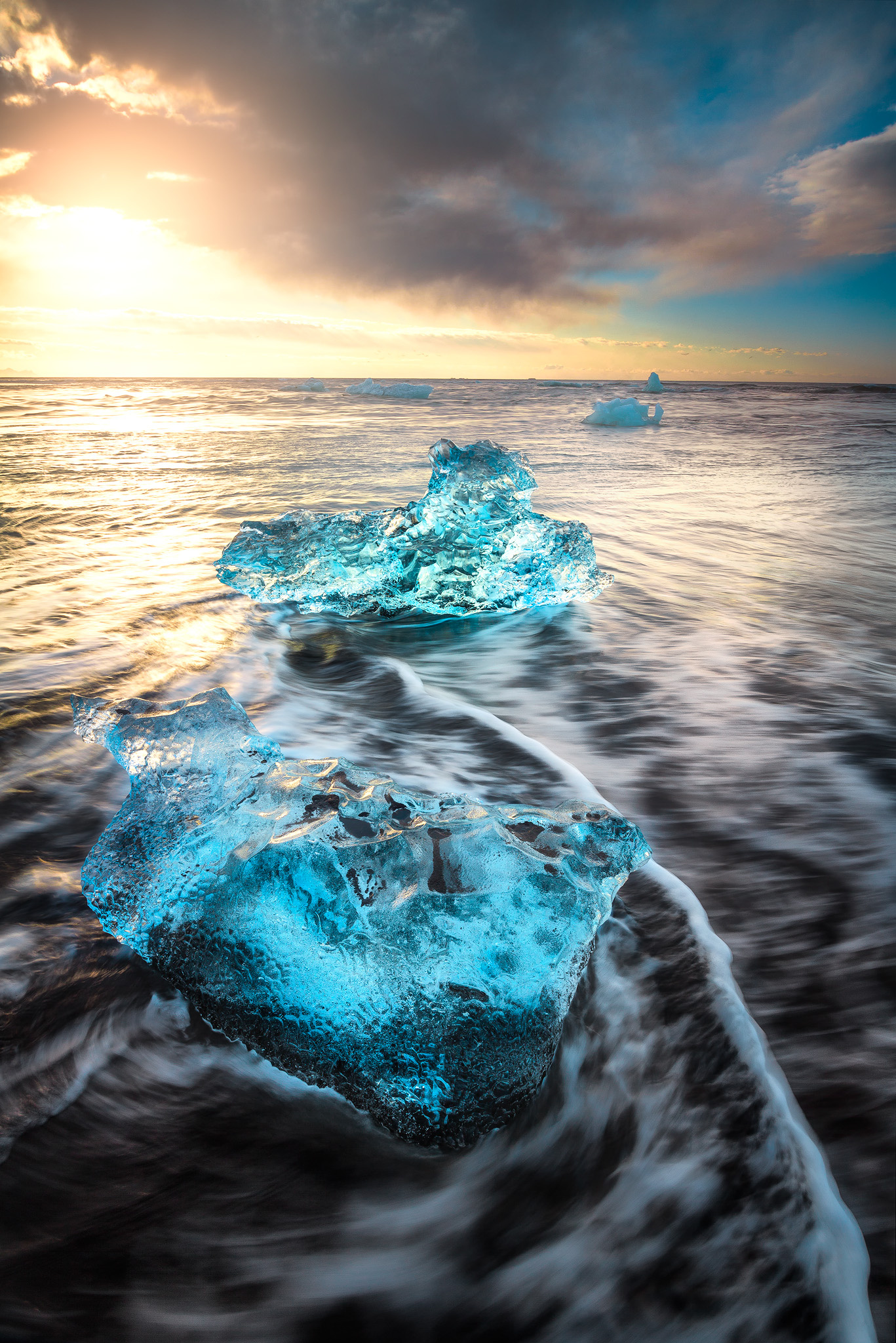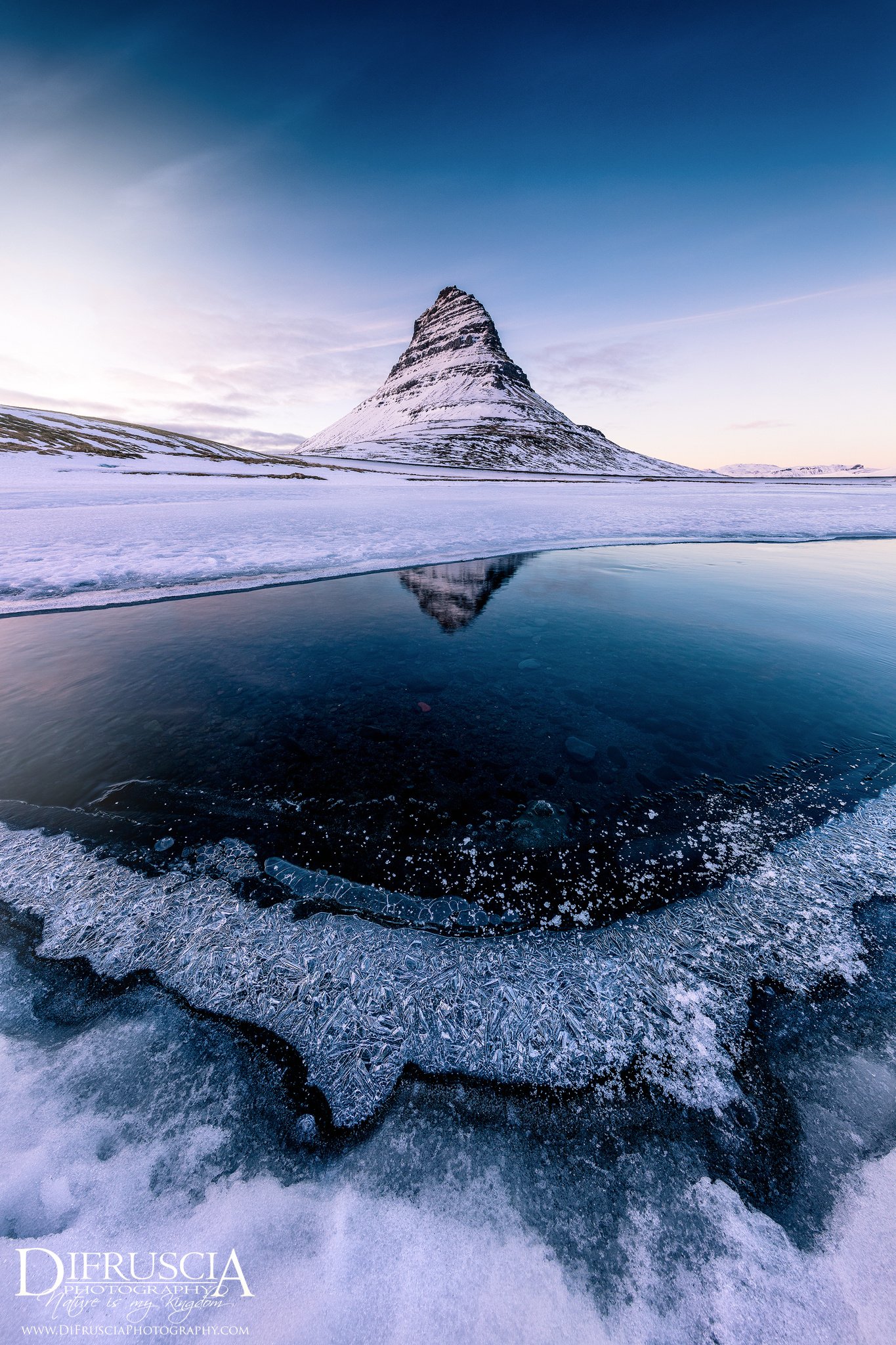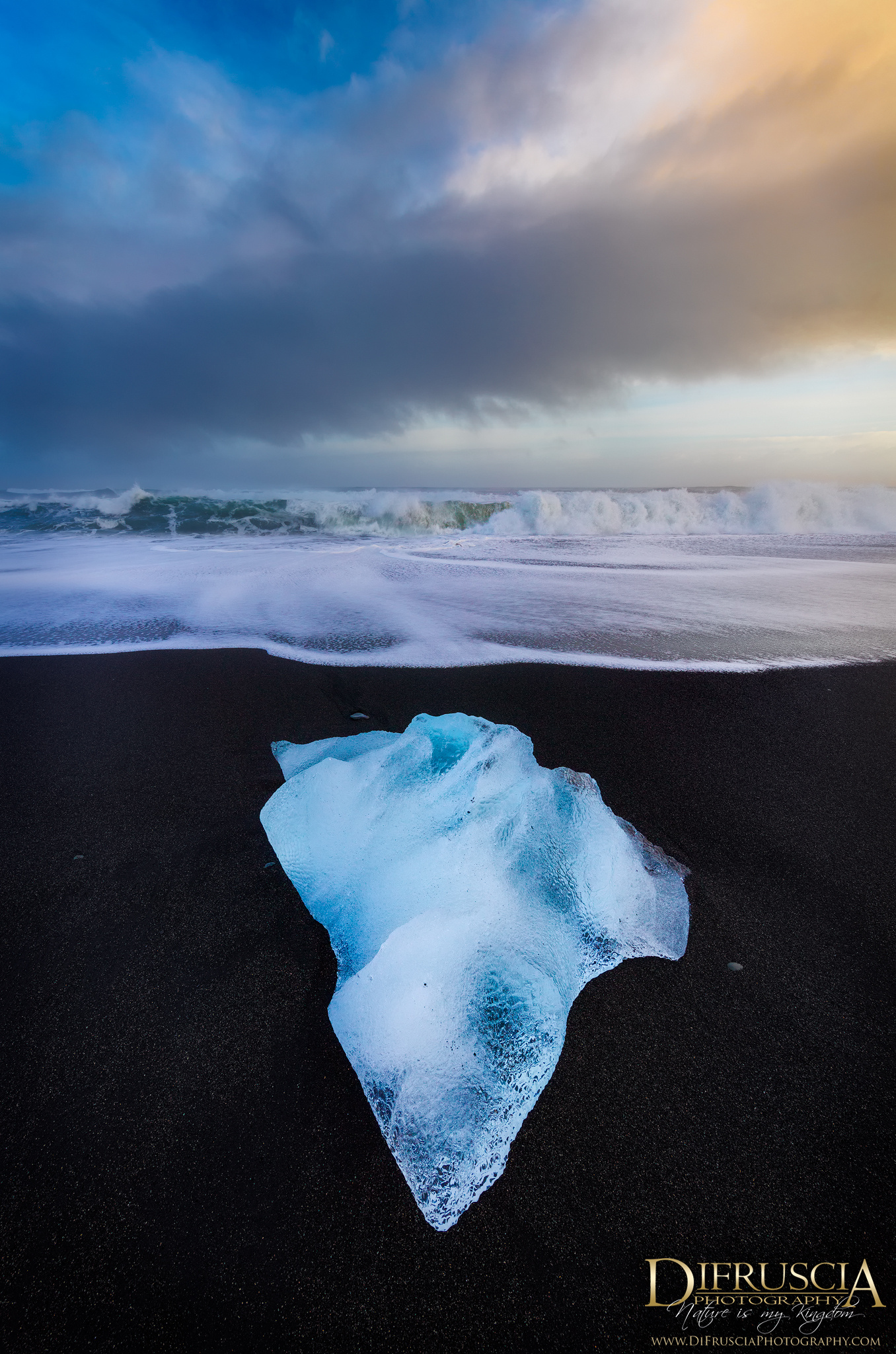11 Jaw-Dropping Examples of Portrait Photography
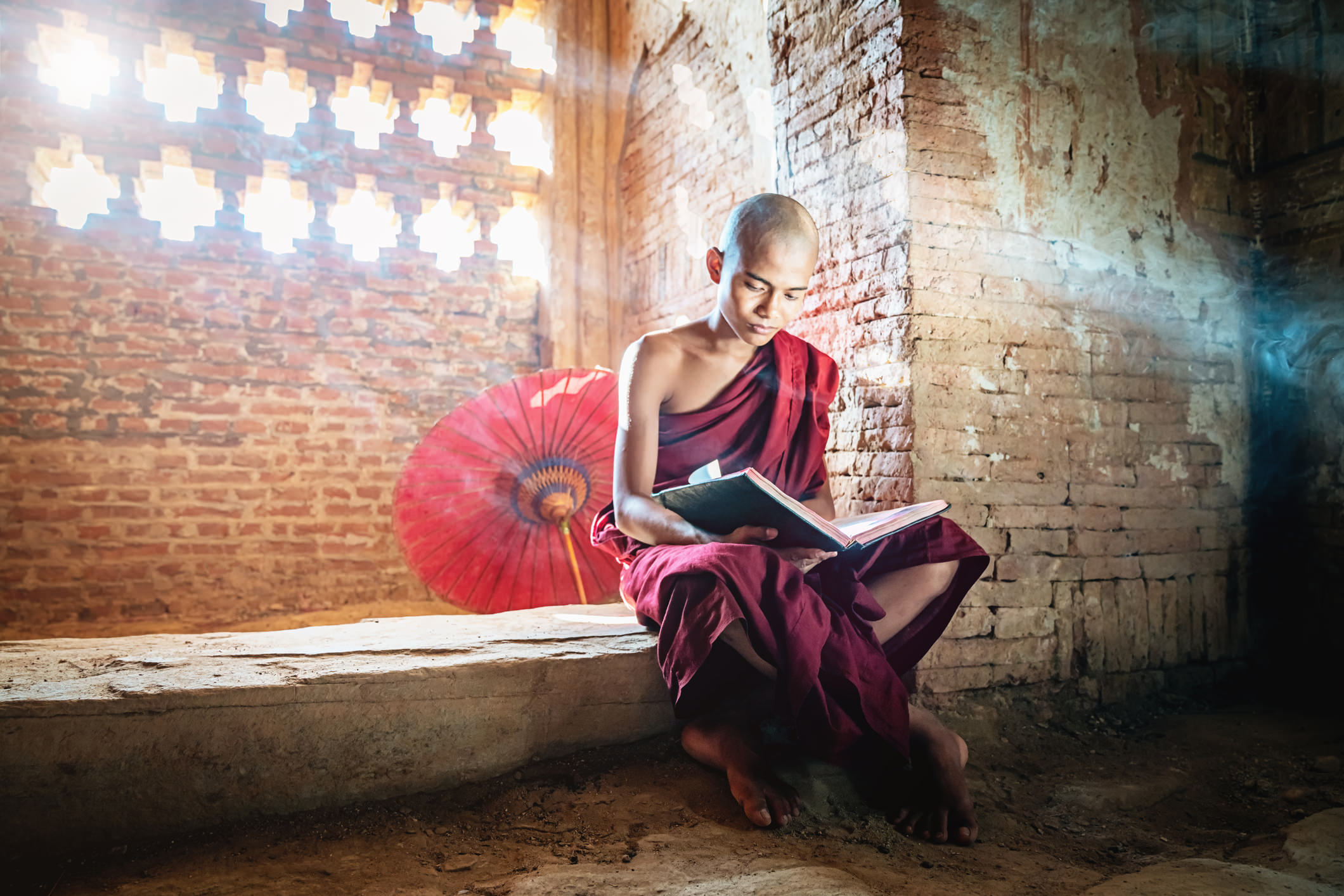
When you think of what makes a portrait visually impactful, what comes to mind?
For me, I’d have to say it’s how the shot is framed.
I know that might sound like an unusual answer to my own question, but hear me out…
When I hear the word “portrait,” I immediately think of the Afghan Girl picture by Steve McCurry all those years ago.
Do you remember that shot?
It’s gorgeous in more ways than one, but I especially remember how the photo was close-up, but not so close that it felt restrictive.
But that’s just me!
There are plenty of other elements that can make or break a portrait. Let’s take a look at 11 examples of how photographers can create portraits that make your jaw hit the floor.
When creating an environmental portrait like the one above, it’s important to include details that help tell the subject’s story, but without taking attention away from the subject. In this case, the illumination on the boy’s face helps draw your eye to him, but the photo is also inviting enough to inspect the surroundings in which these boys live. By having the same view over the valley as the boys, we get a better idea of what life might be like for them.
This portrait is a prime example of how the angle of view impacts the feel of the shot. By getting down to a low angle, the photographer emphasizes the size of the two men in the frame. What’s more, the low angle of view gives us a front-row seat to the supporting details - the lantern, the fire, and the boats, making this a more compelling image to view. Imagine this shot if it had been taken from a high perspective or even an eye-level view. It wouldn’t have the same visual impact.
Composing a portrait from a good distance away can be tricky because the subject can get lost among the details. However, as we see in the portrait above, using a frame within a frame - the tree - helps to keep the viewer’s attention on the boy riding his bike. What’s more, the tree helps block out the intensity of the rising sun, which allowed for the creation of a beautiful, detail-rich silhouette of the tree, the boy, and his bike.
Black and white portraiture is often trickier to pull off than color portraiture because you have to learn how to “see” in black and white. That means paying attention to details like shadows and highlights, patterns, and textures. In this image, the sidelighting helps create interesting areas of light and dark, while the inclusion of the pots adds some geometric visual interest. The placement of the man to the right, which follows the rule of thirds, allows for a composition that feels more balanced and active as well.
When striving to create a candid portrait, one of the best tools at a photographer’s disposal is a long focal length lens. By shooting at 200mm, the photographer of the image above was able to take a position far enough away from these boys that he didn’t interfere with their playtime. As a result, we see a genuine, natural portrait of kids being kids without them feeling as though they need to “act right” or “look right” for the camera.
Leading lines are often associated with landscape photography, but as we see here, they are also a powerful compositional tool for portraiture. The converging lines of the pathway and the vertical lines of the columns on either side of the path help point our attention to the two boys. The different types of lighting in the photo - the soft candlelight that gently illuminates the boys’ faces and the brighter, broader light coming in from above that highlights the texture of the walls - gives the image a greater level of depth and dimension.
https://www.photographytalk.com/photos/405021
Unlike the previous photo, this one was taken with a 15mm wide-angle lens, which just goes to show that you can create a compelling portrait with any type of lens. The wide-angle view does two things for this shot: the boy in the foreground appears more prominent in the frame and we’re afforded a view of his surroundings in the temple. Of course, the shafts of light streaming in from the window are the highlight of the image, and act as an ideal visual element to frame the primary subject.
All portraits - all photos for that matter - benefit from great lighting. But when creating a close-up portrait, lighting becomes even more important because it helps the viewer inspect the details of the shot. In this case, the soft, even lighting perfectly illuminates the features of the subject’s face, so much so that you can easily see the texture of their skin. The highlights on their cheeks and lips give the image just enough brightness which contrasts beautifully with the subject’s dark eye color.
Silhouetted portraits like this one can benefit from the inclusion of fine details that help catch the light from behind. In this case, the action of the man holding the net up gives his body a more interesting shape to silhouette, while the illumination of the net adds those needed details to make the shot more visually engaging. Note how the backlighting helps define the texture of the water as well, which adds another layer of interest to the photo.
In another beautiful example of a wide-angle portrait, we see how shooting at 15mm helps define the space around the subject. The wide-angle view incorporates the walls on both sides of the image, which acts as a delicate frame to lead the eye deeper into the shot. The archway behind the boy acts as another visual frame, helping our eyes to be drawn in by the warm lighting flooding in from out of frame. The wide-angle view also makes the boy seem a little smaller, giving the impression that this temple is quite voluminous.
This image is an ideal example of how strong lighting can result in a beautiful black and white portrait. The long shadow cast by the light entering from the left creates a better sense of dimension. The lighting also gives us a good view of the texture-rich wall behind the subject, which adds another layer of interest to the shot. Additionally, this portrait was taken at ISO 3200, which just goes to show how far you can push the ISO on some cameras without getting an overwhelming amount of digital noise.
What these photos have in common - aside from them all being jaw-droppingly beautiful - is that they were taken by photographers on a trip with Discovery Photo Tours.
When most people think of photo tours, I imagine they think of landscape photography. But when traveling, there are ample opportunities for portraiture as we’ve seen in the photos above.
What’s so great about participating in a trip by Discovery Photo Tours is that you get to practice your photography skills in all kinds of settings with other photography enthusiasts. Work side-by-side with photographers of all skill levels, and learn new techniques from professionals who come along for the ride for the specific purpose of helping you become a more skilled photographer.
Share your work, get feedback, improve your skills, and see the beauty of the world all at the same time. That sounds like a wonderful way to spend a few days!
For more details about upcoming travel dates, visit Discovery Photo Tours.
We Recommend
9 Examples of How Landscapes and People Go Hand in Hand
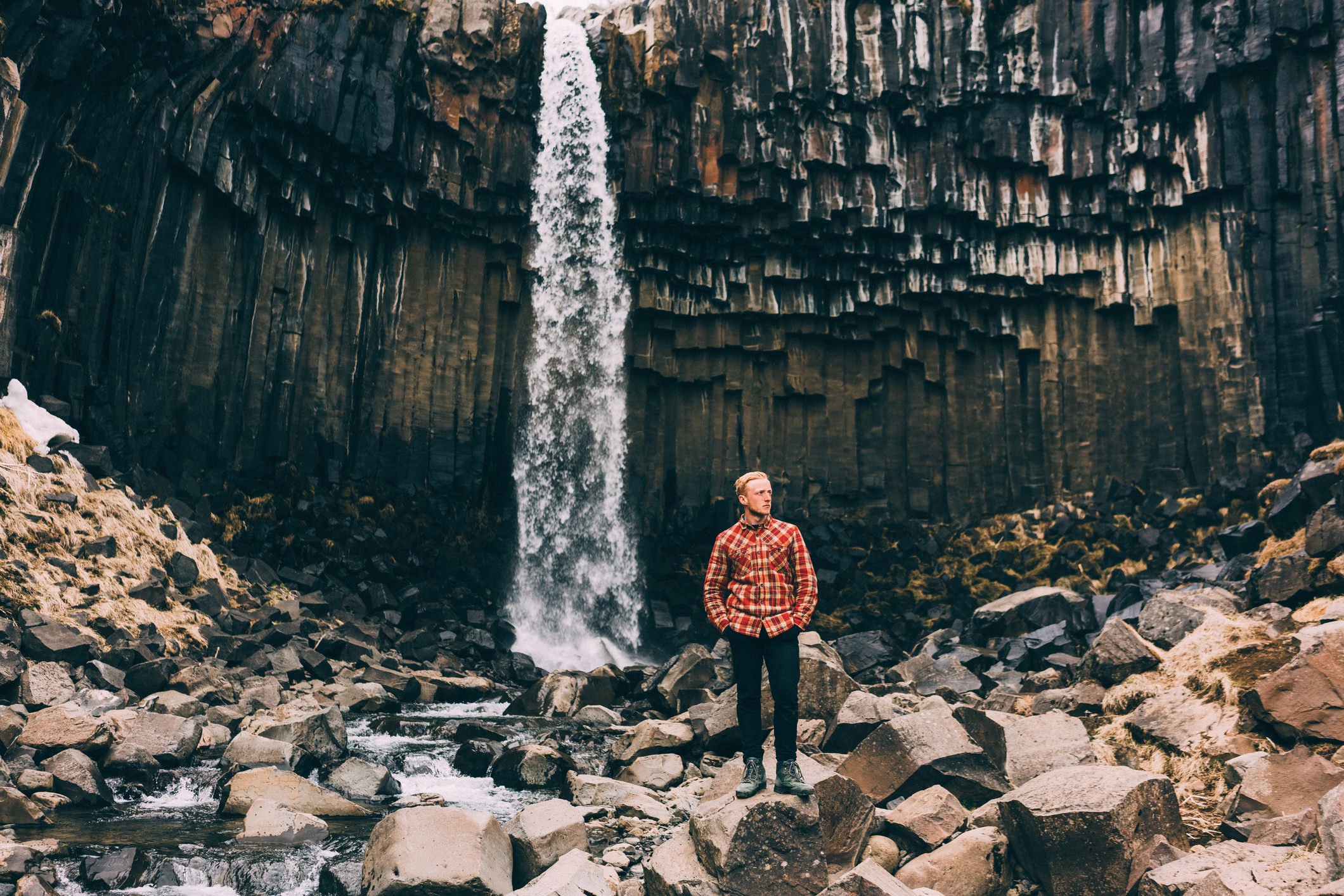
My guess is that for most people, the term "landscapes" evokes a certain mental image.
Maybe a waterfall cascading over a cliffside...
Or perhaps a mountain scene at sunset.
I tend to think of the beach, simply because that's a landscape I see quite a lot.
Something that I'm betting most of us don't think about when we think of landscapes is other people or things people have created, like buildings.
Yet, mixing people with landscapes can lead to beautifully composed photos that have more depth and meaning than a "traditional" landscape.
In the image above, the waterfall and the interesting texture of the rocks that flank it are gorgeous and visually interesting.
But the addition of the man into the shot humanizes the scene and gives it that much more visual interest in which to engage our eyes and our attention.
Let's look at a few other examples of how people and natural wonders can come together to create a beautiful photo.
When presented with a scene like the one above, just about any photographer would be tempted to photograph it as it is, with the waterfall on full display on its own.
However, by adding the human element, a photograph with more meaning has been created.
The man's triumphant pose gives this landscape shot a completely different feel - one not just of awe at the stunning landscape, but also one that feels full of joy.
Though landscapes can have emotion without a human presence, it's hard to deny the sheer power of emotionality that a human form adds to a landscape.
A human element can also elevate the interest of a landscape shot that might otherwise not be all that interesting.
Look at the image above, and try to imagine it without the inclusion of the man and his camels. The photo would be completely different, right?
The landscape itself is barren - lonesome even - with little in the way of color variation to keep the eye interested.
But with the man and his camels placed in the foreground, the shot immediately has a more compelling story to tell.
Now the image isn't relying just on the texture of the rocks in the foreground or the shape of the mountains in the background to retain the viewer's interest. Instead, with the human factor incorporated into the scene, the photographer can tell a complete story about this place and the people that call it home.
On the other hand, the human element doesn't necessarily have to be a person that is placed prominently in the shot.
As seen in the image above, the buildings of Venice add all sorts of lines, textures, and structure to a shot that enhances its feel.
Here, the vibrant colors of the buildings and their lights work together with the saturated colors of the sunset to delight the eye.
What's more, the presence of the gondola and its riders in the foreground gives the viewer yet another layer of interest to hold their attention.
This is a prime example of how a normal, everyday, urban scene can be paired so nicely with a landscape element like a sunset.
Adding a person into a landscape scene also helps give context to the surroundings.
I think you'll agree that the waterfall in the image above is breathtaking. However, sometimes it's difficult to judge the scale of a landscape when there isn't anything familiar in the shot to help you understand its size.
In this case, adding a person into the shot gives us that familiar object by which we can judge the size of the waterfall and the cave. That, in turn, makes the landscape elements all the more impressive as we get a better understanding of just how large they actually are.
The image above was one of our Inspirational Photos of the Day, and like the images that precede it in this article, it shows how the addition of a human element takes the photograph to an entirely other level.
Even without the hot air balloons, the image is beautifully layered which gives it plenty of dimension.
But the balloons add even more layering and texture to the shot that helps define the space. What's more, the balloons break up what would otherwise be a very dark, silhouetted area of the photo.
Furthermore, the hot air balloons give the image a bit of whimsy and a sense of adventure that's really only possible when you incorporate humans or human activity into the scene.
Sometimes, photographing the mark that humans have had on the landscape is the best way to express what the scene is like.
In the image above, the ruins of the ancient city tell a much more compelling story about life in this region of the world than a more traditional landscape image would have been able to tell.
The size and expanse of the space makes one ponder how long it took for this city to be built as well as how long it's managed to stay standing after such a long time. In that regard, adding these human elements gives the photo much greater meaning while also reminding us that we are but a small part of life on this planet.
This image is a prime example of how people, their creations, and landscapes come together for the betterment of the shot.
The landscape itself is beautiful in its own right, with gorgeous rolling hills and vibrant colors to delight the eye.
But with the city framed in the middle of the shot, we understand how it interacts with the surrounding environment. And with the tower of the city appearing to rise up and almost touch the low-lying clouds, we get a better sense of the height of the mountain upon which the city was built and develop a better appreciation for just how difficult it must have been to construct the city in the first place.
When framing up a landscape shot that includes a person, placement of the person isn't as important as one might think.
In this instance, breaking the rule of thirds and placing the subject in the middle of the frame works beautifully - you still get a full view of the mountains in the background as well as the beautiful colors and textures of the foreground.
Better still, the position of the man atop the boulder and the low s hooting angle make him seem much larger and formidable - a worthy adversary to a landscape that is so obviously harsh.
If you're a landscape photography enthusiast, take some inspiration from the photos above, and next time you're out shooting, see what you can do to incorporate people or manmade features into your shots.
If you really want to step up your photography game while seeing some of the incredible sights in the images above, consider taking a trip with Discovery Photo Tours.
As their name suggests, Discovery Photo Tours is all about helping you discover the beauty of the world while working on developing more complete photography skills and know-how.
Discovery Photo Tours offers trips to many destinations, from Iceland to Jordan and Italy to Norway so that you can see some of the most breathtaking landscapes on earth and hone your skills under the tutelage of master photographers.
That's right - Discovery Photo Tours isn't just about traveling to far-flung destinations - it's about learning how to document those travels more effectively as you go from one location to the next with professional photographers to teach you and offer feedback along the way.
That sounds like a great getaway to me!
We Recommend
9 Incredible Photos of Natural Wonders to Inspire Your Weekend
There's nothing like what's pictured above around where I live.
Maybe that's why I find that shot so mesmerizing!
It's like having tunnel vision, but through a beautiful ice cave with all sorts of texture to delight the eye.
And while I'm unaware of any ice caves in the Los Angeles area, I can take inspiration from this photo and the ones below to take my own amazing shots of landscapes I find around me.
I think you can take some inspiration from these photos as well!
Though they are of far-off places that most of us have likely never seen with our own eyes - let alone our cameras - it's still nice to see the beauty of other parts of the world.
With that in mind, let me present a few jaw-dropping images that I hope will get your creative juices flowing for some photos this weekend.
When I look at this image, I can't help but smile.
I mean, this guy is having a great time!
And why shouldn't he? With that kind of light display, I'd be jumping for joy too.
The great thing about this shot (besides the northern lights) is that playful vibe. Adding a personal, human element to a landscape can certainly elevate the photo to another level. This image is proof of that!
This photo caught my eye because of the sheer simplicity of the composition.
But upon closer look, I realized that there's actually quite a lot going on here...
First of all, that sky is amazing. And I'm not just talking about the colors of the setting sun.
If you look at the top of the frame, you'll see loads of texture in those clouds that give the sky a great amount of detail.
Similar detail is present in the foreground too. All those rocks strewn about draw the eye into the shot and toward that gorgeous tree in the middle of the frame.
Speaking of texture, this shot has plenty of it!
Here, we see the importance of having foreground interest to bring the eye deeper into the image.
Don't get me wrong - that Mars-looking landscape in the background is something to behold, but the dry, cracked surface in the foreground really gives this image some added depth and visual interest.
The slow shutter was a good call here as well. The ghost-like steam rising from the middle of the shot only adds to the otherworldly appearance of this landscape.
What's the first thing you notice in this shot?
Personally, the usage of a frame within a frame is what caught my eye.
And then I looked closer...
The texture in the foreground (as in the previous image) is quite something, giving the shot tons of detail that keeps the eye engaged with the scene.
But a more subtle element of the shot is the pattern on the ceiling of the cave. I mean, WOW!
It almost looks like something that was painted or carved on the rock. Adding textures and patterns like these is a surefire way to create a landscape photo that is more compelling.
This is an awesome example of how to incorporate a frame within a frame, but in a way that is perhaps more subtle than the previous example.
When using a frame within a frame, it doesn't have to extend around three or four sides of the shot.
Here, the tree's trunk and limbs serve the same purpose of directing the eye, this time toward the church, but does so by occupying just two sides of the photo.
More importantly, though the tree is a prominent feature, it has been used in a way that it doesn't distract from the other interesting elements in the shot, namely the cross, the church, and the northern lights beyond.
One of the easiest ways of creating a photo that has more visual interest is to simply shoot from a unique angle.
Too often, photographers stand straight up and shoot from eye level.
The result is a photo that might be perfectly fine, but doesn't give the viewer a different perspective.
This image benefits from a low-down perspective in that the camel and its rider look absolutely enormous.
By kneeling down, the photographer is also able to incorporate the lines and pattern created by the pavers of the road.
When you're out shooting, give a low perspective a try and see how it can improve the look and feel of your photos.
The challenge for many landscape photographers is to incorporate all the beauty they see without the image feeling overwhelming.
This shot could have very easily gone sideways, given that there are so many elements going on - colors, texture, light, and so forth.
However, this photographer managed to create a scene that feels calm and serene, despite all the visual stimulation.
By placing the horizon line in the middle of the frame, you have the benefit of viewing the foreground detail as well as the gorgeous clouds hovering over the mountain in the background.
Beyond that, by splitting the view, there's just enough detail in these areas to provide interest, but without being overwhelming.
If need be, experiment with the placement of the horizon in your shots to see how it changes the scene.
Where the previous shot had a lot going on, this one is decidedly minimalistic.
I love a good minimal landscape because I think they're hard to pull off.
This photographer did a fantastic job of framing this shot because we have the salt-covered rocks front and center to give some texture to an otherwise smooth and featureless image.
I have to say, I love the interaction of the bright white in the foreground with the deeper blue of the midground as well. And with a 15-second shutter speed, the photographer introduced enough movement to give this photo a dreamy, relaxing look.
If these photos inspire you - and I'm not sure how they couldn't - might I suggest you check out the common thread between them.
That's Discovery Photo Tours.
They take photographers of all skill levels to magical places like those featured in these photos.
Just imagine waking up and spending the day in Iceland or Jordan, Italy or Namibia, taking photos of gorgeous scenery and rubbing elbows with other photography enthusiasts.
That's not a bad way to see the world and learn a few new skills, right?
Better still, Discovery Photo Tours brings along expert photographers to give you feedback on your work and essential pointers that help you improve your ability to get the shot. All you have to do is pack your bags, get to the destination, and they take care of the rest.
That sounds like an ideal vacation to me!
Learn more about Discovery Photo Tours and upcoming tour locations and dates by visiting their website.
We Recommend
These Inspiring Photos Will Have You Running For Your Camera!
I mean, come on…
The image above is something else, right?
I love everything about it - the lovely blurry water, the foreground texture of the rocks and moss, the inclusion of the person in the shot, the wide-angle view...
I could go on and on.
It makes me want to grab my gear and hop on a plane to some far-off location and spend some quality time out in the wilds.
In fact, I’ve come across a ton of images lately that inspire me to do such things.
I think you’ll find that they are pretty magnificent yourself!
This photo has tons of mood, doesn’t it? On the one hand, it’s on the dark side, which gives it a sense of emotionality while on the other hand, the bright elements of the sunset colors and the pops of bright blue in the icebergs make it almost an ethereal experience. It’s titled “Prelude to a Dream,” and I think that’s quite an apt name!
What’s better than a waterfall? A bunch of waterfalls! With a shutter speed of just 1 second, a glorious blur was achieved to give this image a nice, dreamy look. Note how the vertical aspect enhances the height of the waterfalls while also giving us a prime view of that green-blue river running from top to bottom in the frame. Who says landscape photos have to be taken in landscape format?!
Aside from the incredible detail in this shot from the foreground icebergs and the behemoth chunk of ice in the middle of the frame, this photo inspires me to get outside and take some photos because of the focal length used - 200mm. It just goes to show the value of switching things up and using a lens that might not traditionally be used for this type of photography. I also like the detail of the bird flying in the midground - do you see it?
I’d say most waterfall photos place the visual emphasis on the waterfall itself. But in this example, we see the value of adding surrounding areas of interest to enhance the primary subject. The foreground rock formation has a unique, jagged shape that contrasts nicely with the falling water. Additionally, the positioning of the rock in the foreground of the image gives it more depth and provides a better sense of scale regarding the height of the waterfall.
Who says you can’t shoot towards the sun? As long as you have the appropriate filter, including the sun in your landscape photos can have beautiful results, as seen here. The sun adds dynamic range to the shot with its brightness contrasting nicely against the dark tones of the rocks in the foreground. Speaking of those rocks, their texture adds nice detail in the foreground and pairs nicely with the smooth, blurred out water in the midground.
When composing a landscape shot, you have to take into account where to place the horizon line. If there is a lot of visual interest in the foreground, as is the case in this image, it behooves you to shift the horizon line upward. In this case, that gives us a better view of the interesting formations in the ice, while also excluding the sky, which, although it has some interesting details, doesn’t add as much to the composition as the ice in the foreground.
The difficulty in photographing an exceptionally tall subject is fitting it all into the frame while providing some surrounding detail that gives context to the shot. In this case, the distance from the waterfall and the 50mm focal length were a perfect combination to get the entirety of the waterfall into the shot, as well as the pool at the bottom and a bit of sky at the top. The result is an image that’s perfectly framed with high visual impact.
Color is one of the most impactful elements you can incorporate into a landscape photo. And, as seen here, the almost neon blue of the icebergs give this photo tons of pop that make it look like it was taken in another world. The burst of orange tones from the setting sun adds nice contrast to the cool tones of the blues while the long exposure setting gives the motion of the waves a gorgeous, blurred look.
Wintery landscapes can be difficult to master for a variety of reasons, not the least of which is the abundance of white in the scene. However, you can balance out the white tones of the snow by incorporating landscape elements like the mountain and the lake seen above. The reflection of the water breaks up the otherwise snowy landscape and the sky has just a touch of warmth along the horizon that help make the shot more visually appealing.
The black sand beaches of Iceland are one thing I definitely need to photograph in my lifetime, and the photo above shows you why. Cast against the deep, dark sand, the chunk of ice on the shore takes on an even more interesting look with colors and textures that immediately catch your eye. It’s a peaceful scene that juxtaposes beautifully with the impending wave crashing toward the beach in the midground of the shot.
Like I said, Iceland is on my bucket list, and I’m guessing that after seeing all these incredible photos that it might be on your list as well.
I know that when the day comes, I’ll travel to Iceland with Discovery Photo Tours, and I’d like to recommend that you do the same.
In addition to visiting some of the most iconic locations in Iceland, you’ll have a chance to photograph the Northern Lights - a subject worthy on its own, but set against the backdrop of Iceland, I can’t even imagine how beautiful it will be!
Additionally, the tour is scheduled to be guided by two photography heavyweights - Ken Kaminesky and Patrick Di Fruscia - who will share some of their wisdom while helping tour participants develop more finely crafted photography skills.
Gorgeous landscapes. The Northern Lights. Guidance from photography experts. What’s not to like?
Visit Discovery Photo Tours for more details about this and other upcoming photography tour dates.

